

SUCCESSFULLY DIFFERENT
From the flamboyant Dubai Bling to Shark Tank Dubai and It’s OK, Mazen Laham talks about his reality TV success
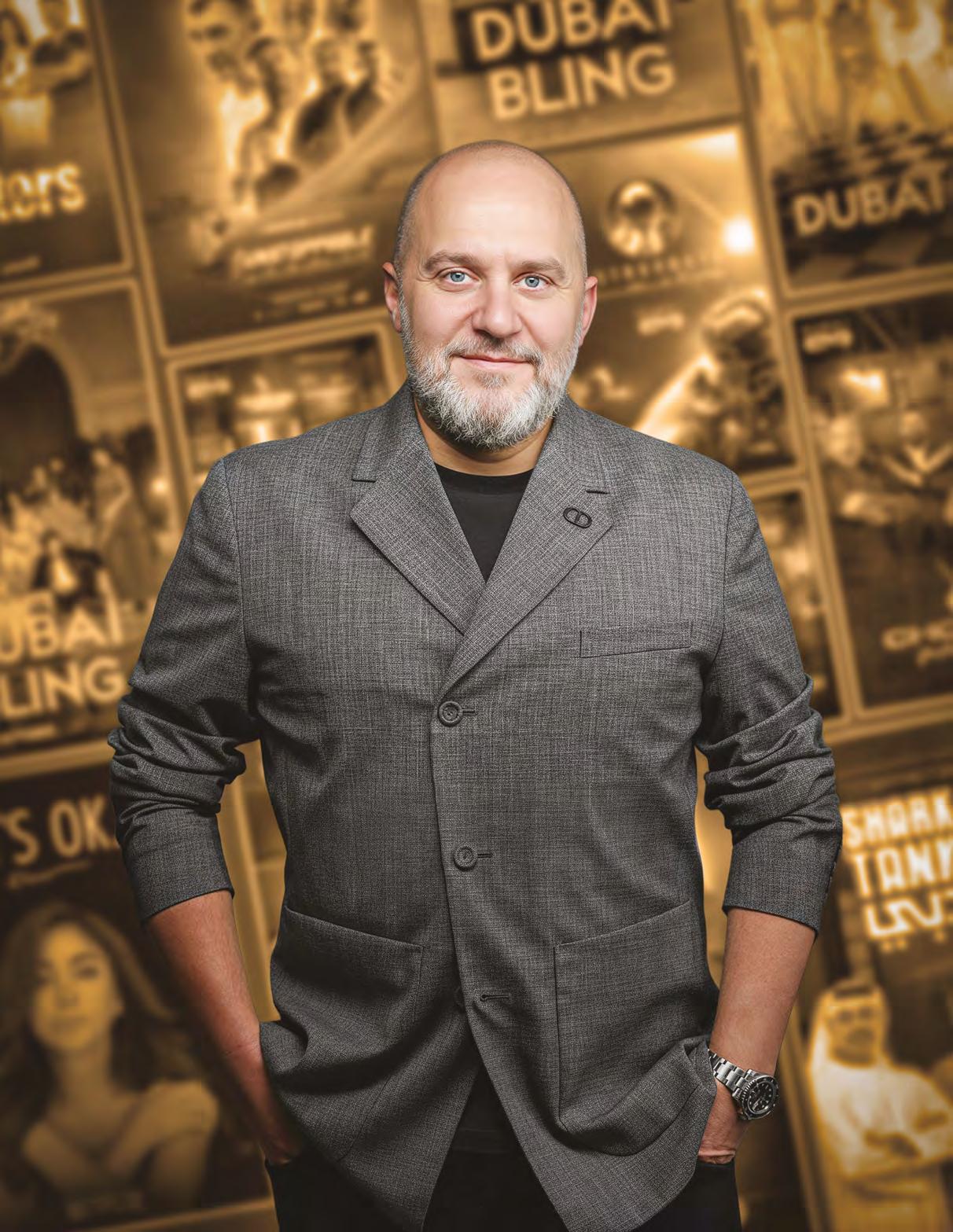
Coming this December...
For over twenty years, First Gulf Company has stood as a trusted partner behind the Kingdom’s most complex projects, delivering reliability, innovation, and excellence.
Now, a defining moment is approaching, one that reflects our journey and what drives us forward. A legacy of trust is entering a new chapter.


GROUP
Managing Director Vijaya Cherian vijaya.cherian@cpipromedia.com
+971 (0) 55 105 3787
EDITORIAL
Editorial Director Vijaya Cherian vijaya.cherian@cpipromedia.com
+971 (0) 55 105 3787
Editorial Contributors
Kalyani Gopinath
Nusrat Ali
Urooj Fatima
Sub Editor Aelred Doyle
ADVERTISING
Group Sales Director Sandip Virk sandip.virk@cpipromedia.com
+971 (0) 50 929 1845 / +44 (0) 7516 993 862
FINANCE
Finance Executive Yonwin D’souza finance@cpipromedia.com
DESIGN & PRODUCTION
Art Director David Fraser design@cpipromedia.com
EVENTS & MARKETING events@cpipromedia.com
DIGITAL SERVICES
Web Developer Hafiz Muhammad Waqas IT@cpipromedia.com
FOUNDER
Dominic De Sousa (1959-2015)
PARTNER
Maria De Sousa
Published by

WELCOME
As we mark fifteen years of BroadcastPro ME, I find myself reflecting not just on how far we have come but on what we have built together as an industry. Our initial goal was to create a space where the industry could meet, where conversations could spark innovation, and where the people shaping the region’s media landscape could stand at the centre of the narrative.
Fifteen years later, that vision has evolved into something far greater than we could have imagined. The BroadcastPro Summit is no longer just a conference; it is an industry gathering that continues to define how our region thinks about media, technology and the future of content. Each year, I see connections form that become partnerships, ideas that take root and evolve into businesses, and debates that go on to shape boardroom decisions. It is a reminder that true thought leadership is about thinking differently and building collectively.
This year’s agenda reflects the energy driving our sector. From the reinvention of streaming and sports broadcasting to the creative renaissance in Arabic content, the conversations we host mirror an industry in constant motion. Our panels bring together the true architects of what audiences ultimately see on screen. They are the unsung celebrities who make it all happen behind the lens, through code, in control rooms and across studios.
What I value most about this platform is how it brings the industry together, not just to network but to challenge each other and to imagine what comes next. And as the day culminates in our gala awards, we move from dialogue to celebration, recognising the remarkable talent and collaboration that continue to drive our region forward.
I hope to see many of you there as we gather once more to share insights, forge new connections and celebrate the people who make our industry what it is. Registration is mandatory and spaces are filling up fast, so please be sure to secure your place early.

VIJAYA CHERIAN, EDITORIAL DIRECTOR

HOME with a View.
Lawo’s HOME Apps processing platform empowers broadcasters to create efficient, dynamic media facilities with maximized infrastructure utilization. Paired with Lawo’s .edge SDI-to-IP gateway, the new HOME Intelligent Multiviewer minimizes bandwidth and CPU usage by intelligently selecting optimal downsized video proxies for layouts.


Agile and intelligent Multiviewer
Hyper-density SDI/IP conversion and edge processing
SEMINAR & WORKSHOP IN DUBAI 10. & 12. NOVEMBER 2025
DYNAMIC MEDIA FACILITIES: Make Media Infrastructure Pay Off BOOK YOUR SEAT NOW!
Lawo HOME Apps Server-based Processing Platform for On-Prem and Cloud Production.

UPDATE NEWS
Imagine Communications acquires Pixel Power; Saudi Film Fund reveals $8.7m film investments; VisionOne Touch and Movicom bring RobyCam Stadium to MENA; DICM opens this month; and more
COVER - DUBAI A DIFFERENT NARRATIVE
With shows like Dubai Bling and Shark Tank, Mazen Laham, Excecutive Producer at Different Productions, has achieved something rare: making unscripted content profitable. He reveals his formula for success to BroadcastPro ME
ESPORTS - KSA ESPORTS AT THE VANGUARD
Saudi-based Vanguard Productions turns to Blackmagic Design solutions to meet rising audience expectations in the expanding esports market

TECH UPDATE A NEW ERA OF CONTENT DELIVERY
Cloud-native solutions are key as viewers demand seamless access, says Arqiva’s Stuart Boorn

STUDIO - IRAQ
ARDH ALSAMA’S VIRTUAL LEAP
We look at how the Iraqi company’s new studio has seamlessly integrated AR and VR workflows
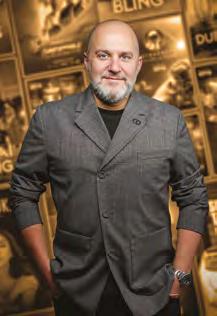

AI CASE STUDY
AL MASHHAD GOES AI
Al Mashhad has embraced AI across its facility to enhance both newsroom efficiency and content innovation. Head of Technology Srinivas Kuppa shares details with BroadcastPro ME
EVENT - DUBAI GLOBAL PERSPECTIVES
Renowned industry mentors discuss global cinema at Advanced Media’s CINESchool
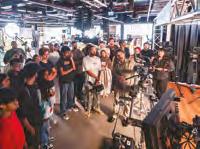

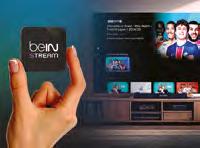
CASE STUDY - BEIN STREAM A NEW STREAM RISES IN MENA
How Synamedia’s cloudfirst platform powers beIN Stream’s rollout across the UAE and Morocco
GUEST COLUMN ATHLETE-GENERATED CONTENT IN FOCUS
AGC poses tough challenges but opens new possibilities for broadcasters, says Alexander Hettel
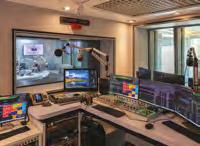
RADIO - ABU DHABI
ADMC OVERHAULS
The revamp brings ADMC’s eight radio stations onto a single centralised data-drive ecosystem
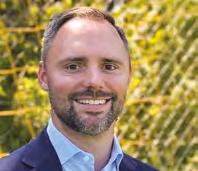

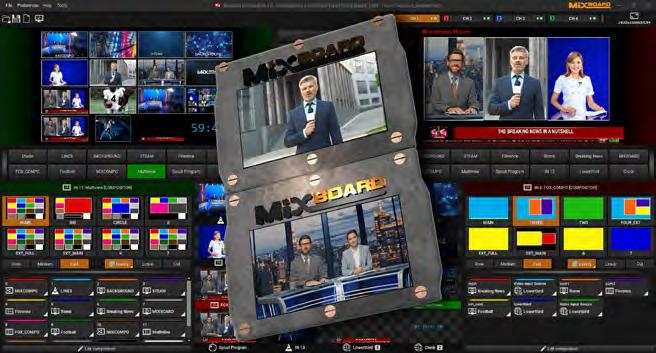




ERIK FEIG LAUNCHES SAUDIBACKED PRODUCTION COMPANY ARENA SNK STUDIOS 11/25
Reson8 Media inks deal with Zero Density
Reson8 Media, a nextgeneration broadcast technology and creative services company with offices in Qatar as well as globally, has joined forces with Zero Density to transform virtual production across the Middle East, North Africa and Turkey (MENAT). Together, the companies

will deliver tailored virtual studio design and implementation services to broadcasters, enterprises and digital platforms to elevate storytelling, streamline production and engage audiences in new ways.
Ali Husseini, Managing Partner and CTO at Reson8 Media, said: “This
partnership brings together the best of technology and creativity. By integrating Zero Density’s real-time graphics capabilities with Reson8’s AI-driven production solutions, we are enabling broadcasters across the MENAT region to create truly immersive and dynamic viewing experiences.”
PETER NÖTHEN TO STEP DOWN AS QVEST GROUP CEO
Former Lionsgate executive Erik Feig has announced his new independent entertainment venture, Arena SNK Studios, a Saudibacked production banner. Feig will lead the company as CEO.
Arena SNK Studios, closely linked to Saudi Crown Prince Mohammed bin Salman, is set to develop major entertainment franchises inspired by video games, anime and other fan-driven communities. The
company’s portfolio will also include creating immersive, experiential events in key global markets. The new venture’s board is chaired by Saudi businessman Majid Al-Ibrahim, who also serves on the board of MBC Group.
Arena SNK Studios reportedly secured $1bn in financing, led by investors in Saudi Arabia. Key backers include MBC Group and SNK, a Japanese video game company owned by the MiSK Foundation. Keep up-to-date at broadcastprome.com
The Qvest Group has confirmed that founder and CEO Peter Nöthen will step down at the end of 2025. Effective immediately, Nöthen will pause his management responsibilities, though he will remain a minority shareholder in Qvest. The incoming CEO, yet to be named, is expected to assume leadership of Qvest in Q1 2026. He will also take on management responsibilities at RSBG ICT, the group’s majority shareholder.
SAUDI FILM FUND REBRANDS, PLANS $8.7M FILM INVESTMENTS
Saudi Film Fund, Saudi Arabia’s national film investment body, has rebranded itself as Riviera Content and revealed two major film investments worth more than $8.7m. The newly named fund is already working in collaboration with international studios. The Cultural Development Fund, which launched the initiative in 2021 and remains the principal investor with a 40% stake, confirmed that Riviera Content has total capital of $100m.
(L) Ali Husseini, Managing Partner and CTO, Reson8 Media.
Ethiopia’s OBN elevates broadcasting with Etere Ecosystem upgrade
Ethiopia’s public service broadcaster, Oromia Broadcasting Network (OBN), has implemented the advanced Etere Ecosystem to streamline broadcast operations and elevate content delivery. Its fully customisable and scalable suite of interconnected software modules manage every stage of the broadcast
ZINC MEDIA GROUP’S SUBSIDIARY OPENS FIRST OFFICE IN RIYADH
The Edge, a Middle East content creation and production company, has opened its first office in Riyadh. The company is a subsidiary of UK firm Zinc Media Group. Operating in Saudi Arabia for over 15 years, The Edge has produced a wide range of documentaries, brand films and large-scale events for leading organisations including Aramco, the BBC, Ithra, SABIC and Red Sea Global. The expansion forms part of Zinc’s broader strategy to invest in the Middle East’s rapidly evolving media and entertainment sector.
process, from content creation and scheduling to playout and archiving. The project was carried out in collaboration with Etere’s distributor, ARET Video and Engineering.
Among the key components is Etere Media Asset Management (MAM), which centralises control of all media assets
and automates complex workflows, ensuring seamless coordination between departments. It is equipped with AIpowered tools such as face recognition, optical character recognition, automated speech-to-text transcription and content censorship. It also tracks costs, approvals and licensing rights in real
time. Other modules include Etere Web, the T-Workflow, Multichannel Editor, Ingest, Resource Management, SNMP Console, Tapeless Reception, Transcoder, Media Manager, Proxy Browsing and Automation.
The Etere suite also has specialised modules such as the Subtitles Tool, Quality Check, Memory and HSM.
CO-PRODUCTION SALON AND CIFF UNITE TO STRENGTHEN FILM AND TV CO-PRODUCTIONS
Co-Production Salon has partnered with Cairo International Film Festival (CIFF), which runs November 12-21.
As part of the festival, Co-Production Salon will host a physical lounge to complement its online platform, integrating market intelligence and matchmaking opportunities to facilitate productive collaborations. The initiative will also contribute to CIFF’s industry programmes, including the Cairo Film Connection, which connects emerging film projects with financiers and investors.
Heba Korayem, founder of CoProduction Salon, said:
“This collaboration represents a pivotal moment in strengthening crossregional coproductions across MENA, offering filmmakers unprecedented access to our network of over 200 media professionals and the track record of facilitating over 500 content

partnership deals.”
The collaboration will extend beyond this year’s edition of CIFF. Participating filmmakers will have the chance to present their projects to potential partners across various markets.
Among Co-Production Salon’s members are Cedars Arts, Different Productions, Rise Studios, Al Manasa, 1001 Platforms and Eagle Films.
Participation will be limited to selected applicants meeting specific criteria, including clear return-on-investment projections, ensuring that only market-ready projects are showcased to potential backers.
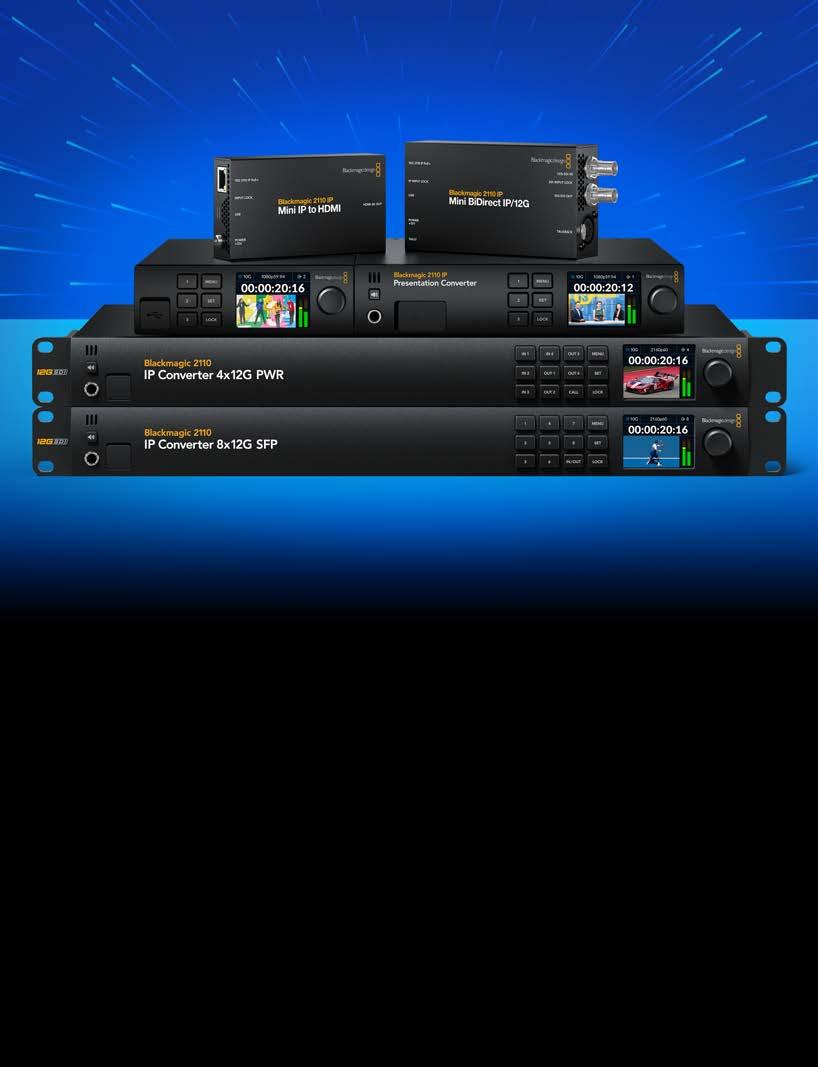
Heba Korayem, founder, Co-Production Salon

Now you can build affordable live production and broadcast systems with SMPTE-2110 video! Blackmagic Design has a wide range of 2110 IP products, including converters, video monitors, audio monitors and even cameras! You get the perfect solution for integrating SDI and IP based systems. Plus all models conform to the SMPTE ST-2110 standard, including PTP clocks and even NMOS support for routing.
Build Professional SMPTE-2110 Broadcast Systems
The Blackmagic 2110 IP Converters have been designed to integrate SDI equipment into 2110 IP broadcast systems. The rack mount models can be installed in equipment racks right next to the equipment you’re converting. Simply add a Blackmagic 2110 IP Converter to live production switchers, disk recorders, streaming processors, cameras, TVs and more.
Conforms to the SMPTE-2110
IP Video Standard
Blackmagic 2110 IP products conform to the SMPTE ST-2110 standard for IP video, which specifies the transport, synchronization and description of 10 bit video, audio and ancillary data over managed IP networks for broadcast. Blackmagic 2110 IP products support SMPTE-2110-20 video, SMPTE-2110-21 traffic shaping/ timing, SMPTE-2110-30 audio and SMPTE-2110-40 for ancillary data.
Uses Simple 10G Ethernet for Low Cost
Blackmagic 2110 IP Converters are available in models with RJ-45 connectors for simple Cat6 copper cables or SFP sockets for optical fiber modules and cables. Using simple Cat6 copper cables means you can build SMPTE-2110 systems at a dramatically lower cost. Plus copper cables can remote power devices such as converters and cameras. There are also models for optical fiber Ethernet.
Incredibly Easy to Install
One of the biggest problems with SMPTE-2110 is needing an IT tech on standby to keep video systems running. Blackmagic 2110 IP converters solve this problem because they can connect point to point, so you don’t need to use a complex Ethernet switch if you don’t want to. That means you get the advantage of SMPTE2110 IP video with simple Ethernet cables, remote power and bidirectional video.
Imagine Communications to acquire Pixel Power

Imagine Communications has signed a definitive agreement to acquire Pixel Power Limited, a wholly owned subsidiary of Rohde & Schwarz. The transaction marks a strategic alignment between the
two companies, enabling Imagine to expand its live production and playout offerings while allowing Rohde & Schwarz to focus on its core businesses in Test & Measurement, Technology Systems and
ROSS VIDEO ACQUIRES IOVERSAL TO EXPAND INTO EXPERIENTIAL AV
Networks & Cybersecurity. The acquisition is expected to close in 2025, pending customary approvals.
Through this acquisition, Imagine will integrate Pixel Power’s softwaredefined, deploy-anywhere platforms, enhancing its live production ecosystem and playout solutions. The combination of complementary technologies and engineering expertise will provide broadcasters with a broader range of integrated tools and greater flexibility in workflow design.
WEDOTV EXPANDS INTO MENA WITH EVISION DEAL
SHURE ANNOUNCES NEW HIRE
Ross Video has acquired ioversal, an innovator in audiovisual production workflows and the creator of immersive experiences platform, Vertex. The move marks Ross’ expansion into experiential technologies, enhancing its live production ecosystem. The Vertex suite is widely used for interactive exhibits, live entertainment, largescale productions and dynamic projection mapping. It enables the integration of video, audio, lighting and control systems into a single solution, allowing the creation, management and automation of engaging audiovisual experiences.
Wedotv has extended its reach to the MENA region through a new distribution agreement with evision, the media division of e&.
With the acquisition Ross aims to broaden its offerings across broadcast, sports, and entertainment, leveraging a unified toolkit that merges live video production with experiential AV.
As part of the deal, two of wedotv’s FAST channels, wedotv BIG Stories and wedotv sports MENA, are now available to subscribers of TV by e& and on the OTT platform, Starz ON. The partnership will be further strengthened with the launch of a third wedotv channel, wedotv Movies, on TV by e& and Starz ON.
Shure has appointed Ekta Shetty as Senior Sales Director for Africa, the Middle East, India, Southeast Asia and the Pacific. Based in Dubai, Shetty will lead the Sales Management, Market Development, Channel Marketing and Customer Experience teams across Dubai, India, Singapore and Australia. She will be responsible for driving growth, strengthening distribution and channel partnerships and advancing Shure’s go-to-market and marketing initiatives. Shetty has more than 15 years of international leadership experience in the AV and unified communications industries. She previously worked at Barco, where she successfully led Sales and Marketing across the Middle East, Africa and Asia Pacific. During her tenure she streamlined operations, optimised channel programmes and enhanced regional performance, achieving consistent business growth.
Vision One Touch and Movicom bring RobyCam Stadium to MENA
Vision One Touch Film Production Services announced a strategic partnership with international broadcast technology innovator Movicom during IBC 2025. Through this collaboration, Vision One Touch becomes the first company in MENA to locally offer RobyCam Stadium.
RobyCam Stadium offers regional broadcasters and producers immediate access to the aerial camera system, tailored for sports broadcasts, TV productions and live event coverage.
Suspended by four synthetic cables and operated via a precision real-time winch system, the camera moves freely through three-dimensional space while maintaining image stability even during rapid
movement or sudden stops. Covering a working area of up to 250m, the system’s camera can reach speeds of up to 8m/s. Its gyrostabilised head minimises vibrations and supports long focal-length lenses.

ROTANA MEDIA AND SCENE TO LAUNCH MICRO DRAMAS ACROSS ARAB WORLD
Rotana Media and Scene have announced a partnership to introduce short-form series, known as micro dramas, to audiences across the Arab world for the first time. Presented in a vertical format tailored for mobile viewing, the collaboration aims to produce original short-form content while adapting select Rotana titles to suit today’s evolving digital consumption habits. This partnership is
a major leap in the evolution of Arabic drama, bringing storytelling closer to younger, mobilefirst audiences.
Nada Makhzoum, CEO of Rotana Channels, said, “Our partnership with Scene extends this vision by empowering Arab creativity through new, innovative storytelling formats that reach viewers wherever they are, in the way they prefer to watch.”
Sayed Finianos,
founder and CEO of Scene, described the collaboration as a milestone for the regional industry:
“Rotana’s deep expertise and solid position in the Arab media landscape bring tremendous value to this agreement. Together we aim to introduce a new generation of shortform dramas for Arab youth, combining high production quality with the spirit of the digital age.”
RobyCam supports HD, UHD and 4K formats. All Movicom systems are equipped with Compass AR technology, which captures precise camera position, orientation and lens data in real time. One Touch Production will provide rental services of RobyCam Stadium across the region. In addition, the company acts as a mediatech integrator, adapting the system to venues, embedding it into broadcast and XR workflows, and supporting the deployment of AR technologies.
DAZN APPOINTS SMC AS EXCLUSIVE FIRST MENA RESELLER
DAZN has appointed Saudi media advertising company SMC as its exclusive first reseller in MENA. SMC will lead DAZN’s commercial sales operations across the region.
DAZN MENA, the regional arm of DAZN, is the official domestic broadcaster for all events organised by the Jockey Club of Saudi Arabia and hosts highprofile sports content, including the PGA Tour, Saudi Pro League and Riyadh Season Boxing.
The teams from One Touch Production and Movicom at the signing of the deal.
Red Sea Film Festival unveils 2025 ‘New Saudi Cinema, Features’ lineup
The Red Sea International Film Festival (RedSeaIFF) has announced the lineup for its New Saudi Cinema, Features programme, which will present five new documentaries celebrating the creativity and diversity of Saudi filmmaking. The films, Noor, Human Tide, Seven Summits, Beyond the Shifting Sands and Circles

of Life, will have their world premieres during the festival’s fifth edition, taking place December 4-13. Through these five documentaries, RedSeaIFF continues to champion the voices shaping Saudi Arabia’s cinematic future, offering global audiences a window into the country’s artistic spirit, cultural
DICM 2025 SET TO WELCOME GLOBAL INDUSTRY LEADERS
Dubai International Content Market (DICM) 2025 is set to take place November 4-5 at Madinat Jumeirah. More than 90 exhibitors and 250+ buyers from over 50 countries are confirmed, and over 500 meetings have been booked through the Content Business Hub. A standout feature of the event is its strong regional buyer participation, with major broadcasters including MBC, OSN, Shahid, StarzPay, TOD, Abu Dhabi Media, Dubai Media, Oman TV and Qatar Media Corporation in attendance.
DICM 2025 will feature national and international
pavilions, including the ICC Pavilion from Turkiye, KOCCA and JCIA Pavilions from Korea, and the Roskino Pavilion. The DICM Talks sessions will offer valuable industry insights, covering emerging trends such as Ramadan programming, micro-dramas, the evolution of sports media rights and the global rise of Arabic cinema. Panels will feature senior figures from MBC Group, Katara Studios, Film Clinic, Omdia, Fifth Season, Gazprom Media, Zee and RefleKT Media, among others. Another highlight is the launch of Spotlight Stories: The DICM Pitching Challenge,
where regional storytellers will have the opportunity to present their ideas to an esteemed jury. The winning pitch will receive a certificate and an opportunity for potential development with producers and platforms. The Producers Connect Hub also returns, creating a dedicated space for co-production matchmaking and collaboration opportunities. Other participants include Globo, Eccho Rights, TelevisaUnivision, ATV, Inter Medya, Global Agency and Fantawild, and regional champions such as Stars Media, Union Media
depth and human stories that transcend borders.
Faisal Baltyuor, CEO of the Red Sea Film Foundation, said: “This year’s selection showcases the depth of Saudi storytelling. Saudi filmmakers are not only documenting reality, but redefining it through powerful cinematic language.”
EGYPTIAN FILM EDITOR AHMED HAFEZ LAUNCHES POSTPRODUCTION COMPANY
Egyptian film editor Ahmed Hafez has launched STORY, a stateof-the-art post-production company which aims to establish itself as a leading hub for high-end technical and creative services across film, television and advertising. The company offers a full spectrum of services, including 4K editing across multiple suites, HDR colour grading, Dolby Atmos theatrical-ready sound mixing and advanced visual effects. STORY also aspires to nurture emerging talent by serving as a launchpad for films, series and commercials crafted by new voices.
We craft visuals that inspire, backed by technology that delivers. From data-driven graphics and bold channel branding to automated templates and immersive design, we don’t just execute ideas, we engineer them. AI drives both art and systems in everything we do. Since day one, innovation and engagement have been our backbone. Redefining media standards is our mission.
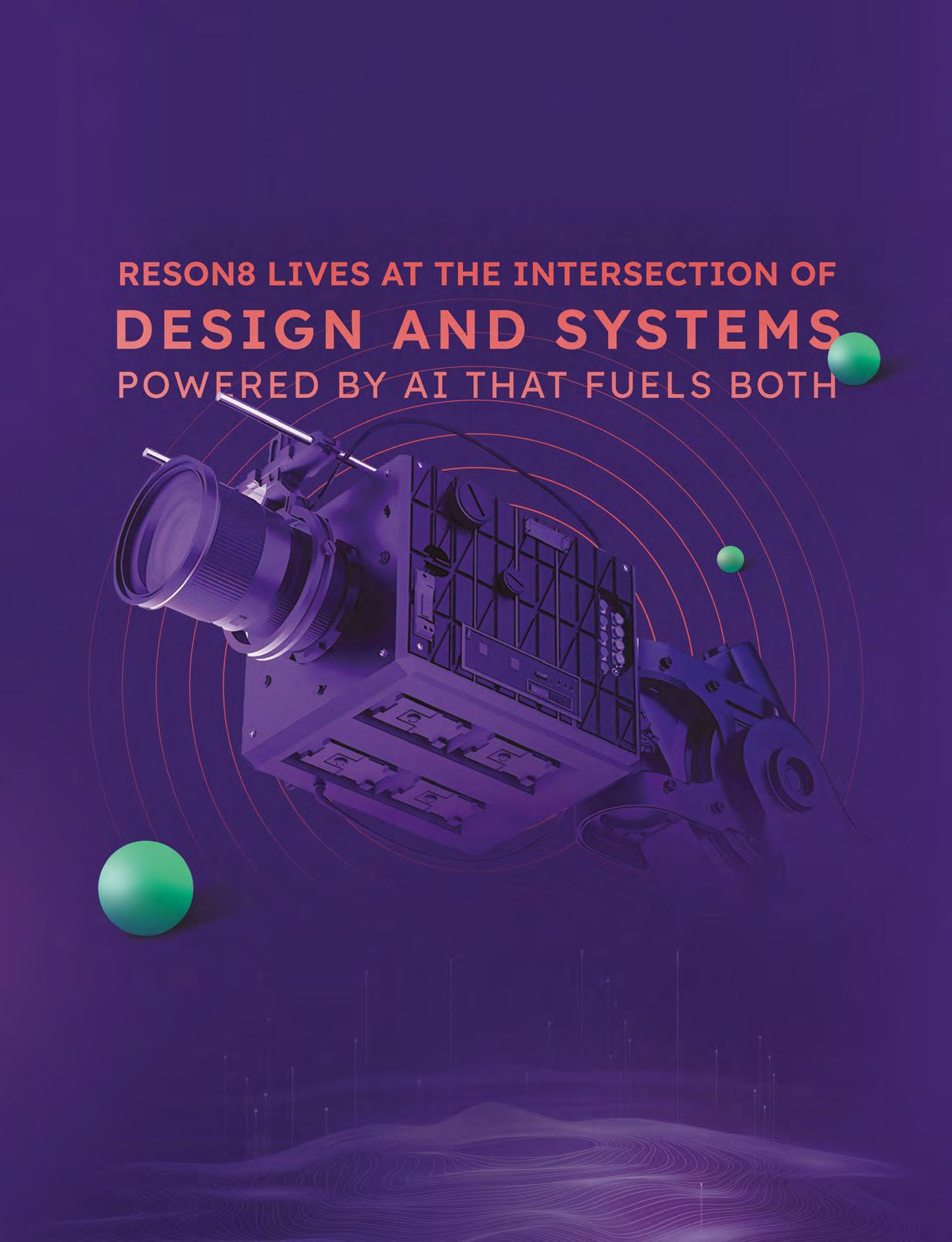
info@reson8media.com reson8media

SUCCESSFULLY DIFFERENT
In a market dominated by scripted television, Mazen Laham is making unscripted content thrive. Through Different Productions, he has produced some of the region’s most talked-about reality and factual series, including Dubai Bling, It’s OK, Shark Tank Dubai and Lebanon, and The Doctors. BroadcastPro Middle East speaks to Laham about the creative processes and challenges behind unscripted shows
Even if you’re not a fan of reality TV, chances are you’ve heard about Dubai Bling’s infamous confrontation between Ebraheem Al Samadi and DJ Bliss, or that unforgettable Shark Tank Dubai moment when chef Nouel Catis walked away from an AED 2m offer for his chocolate brand. Many Arab OTT viewers also remember tearing up as Lebanese pop icon Elissa bared her soul about her battle with cancer in It’s OK
From extravagant parties in Dubai’s dazzling social scene to raw, tearful revelations, these moments feel too dramatic to be real. Yet Mazen Laham, the executive producer behind all these hits, insists otherwise. “Zero scripted,” he asserts. “We don’t change the lives of the cast. We don’t create the stories. What you see is what their lives are like. The marriages, children, drama – they are all real things.”
Visual spectacles like these explain how Laham has been able to make unscripted television, often dismissed as commercially unviable, into a profitable venture. As the founder and Managing Director of Different Productions, he has built a thriving business on reality storytelling. Shows such as MasterChef Arabia, Dubai Bling, Shark Tank Dubai, It’s OK, Chopped and The Doctors
have proven that reality can be both credible and commercially successful.
Different from the beginning For Laham, discipline is the most important part of the creative process. It’s a skill he acquired while interning at CNN London in 2002, the result of his prize-winning documentary at the Ibda’a Media Student Awards organised by Dubai Media City. “I wasn’t interested in news production, but I grabbed the opportunity for the exposure it offered. I learned a lot, especially discipline.”
At the time, he was working as a segment director for the Lebanese Broadcasting Corporation International (LBCI). After his stint with CNN, Laham returned to LBCI, where he climbed the ranks, rising to the position of executive producer. “This was a huge deal back then. The MENA had no concept of an executive producer – the director was everything. But I was aware of the importance of this position.”
During his years at LBCI, Laham produced several shows in both international and local formats. A decade later, he was confident enough to go solo. “I wanted to do my own thing, and I wanted to do something different. That’s how I started Different
Productions in 2014. The name defines our production values; it means quality. Whatever we do, even if it’s a 60-second video, we make sure it’s exceptionally good. We don’t compromise on quality.”
This commitment to quality has set Different Productions apart. The company has been the creative driving force behind several productions across the region, including MasterChef Arabia (2014), The Victorious (2016), Saudi Star (2018, the first singing competition filmed in Saudi Arabia), The Mall (2018), The Quest (2019), Astronauts S1 & S2 (2019 and 2022) and Chopped Arabia (2023).
The high production values of these shows caught the eye of OTT giant Netflix when it forayed into the Middle East, but despite initial interest Laham had to face several challenges: “Our pitches didn’t make the cut at the beginning. It took us some time to figure out what works for a platform like Netflix.”
The breakthrough came with Dubai Bling, the brainchild of Different’s Creative Director Marcel Dufour. “Our pitch for the show was simple: a circle of friends living in Dubai, with stories that continue episode to episode. It’s a nonscripted series that plays like docusoap.”




Navigating challenges
Making unscripted content profitable is no easy feat. Behind the drama and glamour of these shows is rigorous development that can take almost as long as production itself. For instance, casting for Dubai Bling took nearly eight months and production 12 months. “It’s more like headhunting,” says Laham. “Identifying people who fit into this kind of storytelling is the biggest challenge.”
In an unscripted series, he feels the scales always tip in favour of story versus personality. “The stories and relationships have to be genuine and ongoing. We are not interested in their past. We are more interested in what is happening in their life now,

stories that we can capture on camera. Without that, there’s nothing to film.”
The next vital component is connection. “For cast-based shows there has to be some sort of connection between each member. That’s what drives the story forward.”
For Shark Tank, Laham’s biggest challenge is finding high-net-worth investors.
“The sharks have to be firmly established businessmen with their own money to invest. We cannot do the show with, for example, the finance manager of a company. Almost 90% of these investors don’t want to be in the spotlight. Moreover, all five sharks have to be homogeneous. The hardest
step is to lock in the first shark, who becomes the point of reference for the other sharks joining the show. It’s also challenging to work out a schedule that suits all five sharks. They are extremely busy, and we have to find a way to get them all in the studio for 10 days.”
Driven by reality
For Laham, authenticity is nonnegotiable. He points to Shark Tank Dubai, widely regarded as the region’s biggest reality business show.
“The entrepreneurs meet the sharks for the first time on stage,” he explains. “The sharks have no idea who’s coming in, so there’s no room for preconceived judgements. The





reactions, negotiations and offers are 100% real. And we make sure there is no prior connection between them. If there is, they don’t make the cut. That’s our credibility.”
Scripted shows such as Friends or Modern Family can generate revenue for years. They can be sold to other networks and OTT platforms or dubbed and subtitled for new regions, creating several revenue streams. In contrast, explains Laham, “Unscripted series don’t have a shelf life – once they air, their shelf life is short with limited distribution opportunities.”
Most unscripted content – reality competitions, talent shows, game shows, talk shows – is tied to a
specific moment, cast, or context. For example, episodes of talent shows like The Voice or Idol are only relevant during the period they are aired.
We don’t change the lives of the cast. We don’t create the stories.
What you see is what their lives are like
MAZEN LAHAM, EXECUTIVE PRODUCER, DIFFERENT PRODUCTIONS

Once viewers know the outcome, the incentive to rewatch disappears. Other than investigative documentaries or formats with repeated structures, very few unscripted shows have a shelf life. Unscripted productions also face IP issues, says Laham. “In format unscripted shows, the rights usually belong to the global IP owners. Regional producers don’t own the show or have any say in its future use. Additionally, investing to produce original IPs is risky due to the shelf life.”
Despite these obstacles, Laham has managed to turn unscripted into a profitable venture – a testament to his astute business development skills.
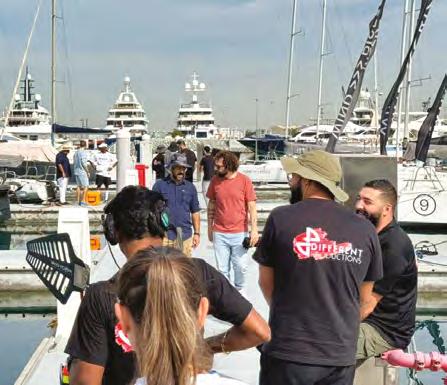
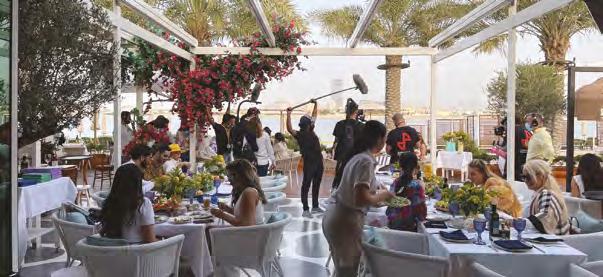
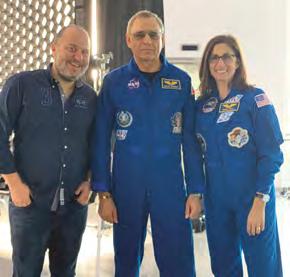
Laying the foundations of a global hub
Even as MENA’s unscripted market shrinks, Laham is strategising how to expand the company’s footprint by positioning the UAE as an international hub for productions.
“I believe Dubai, and the entire UAE actually, can become the base for shows from around the world. The country is production-friendly. Acquiring permits and approvals is fast and easy and there is a continuous support from entities such as Dubai Media Council and the Dubai Film and TV Commission. It’s also very cosmopolitan. You can cast any nationality here without having to fly anyone in.”
He highlights how Different Productions has already cast over 30 nationalities in Shark Tank Dubai, and adds that the company has recently entered the Indian market. “We created the show for an international platform. It’s filmed entirely in the


UAE with an Indian cast and is slated for release next year. Additionally, we are focusing on documentaries where we can own the IPs.”
Laham is also contemplating breaking into scripted production, but with a caveat. “I want to start with scripted, but I don’t want to do one and then stop. It’s either
Unscripted is the least priority for most platforms but Different Productions has shown that it can be profitable and sustainable
MAZEN LAHAM, EXECUTIVE PRODUCER, DIFFERENT PRODUCTIONS
we do it big or not do it at all.”
Different Productions is currently riding high on the success of The Doctors, a dynamic talk show that delivers medical information through relatable social themes such as Gen Z lifestyles and mental health. “It’s a super-energetic show that presents medical information in the form of entertainment. It includes props, demonstrations and guest interactions.” At the time of this interview, Laham was also gearing up for the release of Shark Tank Beirut, a fully local adaptation of the global hit.
From Saudi Star to Dubai Bling, The Doctors and It’s OK, Mazen Laham has proven that unscripted television can be both credible and commercially viable when driven by authenticity and uncompromising quality. “Unscripted is the least priority for most platforms,” he admits, “but Different Productions has shown that it can be profitable and sustainable.”Vijaya Cherian and Nusrat Ali
Mazen Laham envisages the UAE as a global production hub.


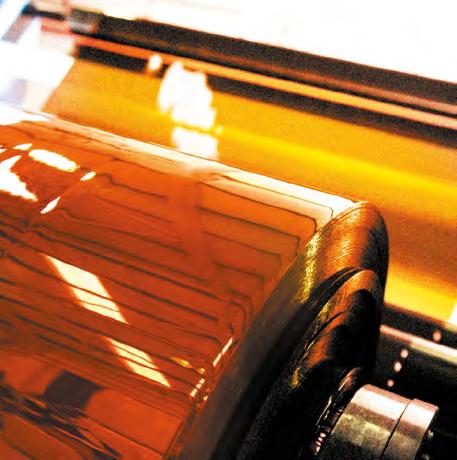





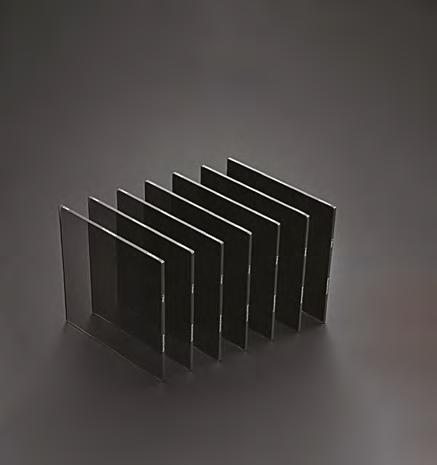
ESPORTS AT THE VANGUARD
Riyadh-based Vanguard has invested in Blackmagic Design solutions to elevate the scale, efficiency and quality of esports production in Saudi Arabia. Vijaya Cherian explores how the company is using the technology to power the next phase of live gaming


Esports in Saudi Arabia is no longer just a pastime; it has evolved into a sophisticated ecosystem where highoctane competition meets cuttingedge production. The broader esports ecosystem in the Middle East and Africa, for instance, is on a rapid growth trajectory, with the regional market valued at $69m in 2024 and projected to reach nearly $190m by 2030, according to Grand View Research. Within this landscape, Saudi Arabia is emerging as a powerhouse, with the country’s gaming and esports sector forecast to generate $13.3bn by 2030, driven by national investment and initiatives such as the Savvy Games Group and the Esports World Cup in Riyadh.
Vanguard is one Riyadh-based company that has capitalised on this and dedicated itself to working exclusively on esports. Its mission spans the full lifecycle of an esports event, from concept and rules enforcement to graphics, packaging, production and live execution.
Leading the live production efforts at the company is Mohammed Nasser, Head of Live Production. With a background in post-production, he transitioned into live esports when he joined Vanguard in 2017, a move that would define his career. “Although I started out in post, when I joined Vanguard in 2017 I moved into live production. It was a steep learning curve, but also incredibly rewarding.”
The company has a team of roughly 100 professionals working across live production, facility management and communications. “Our focus is on consistency and scalability. Unlike traditional sports, which may be seasonal or have one-off events, esports operates nearly every weekend of the year. We have to be ready for any game, any format, every week,” Nasser explains.
One of Vanguard’s key differentiators is its ability to tell the story of a match

In esports, the story unfolds differently than in traditional sports MOHAMMED NASSER, HEAD OF LIVE PRODUCTION, VANGUARD
from multiple angles. The team captures every player’s point of view, weaving together the individual and team narratives that unfold within the game.
“In esports, the story unfolds differently than in traditional sports,” says Nasser. “We don’t just focus on a central action area. We capture individual players’ POVs, their interactions and critical in-game moments. Observers embedded within the game help us switch perspectives seamlessly, so the audience always gets the full experience.”
To manage the complexity of constant production cycles, Vanguard turned to Blackmagic Design for its simplicity and scalability. Nasser says the decision was driven largely by ease of use and the company’s unique staffing model. Most of Vanguard’s
team had never worked in production before, so a system that could be quickly learned and deployed was essential.
“One of my main concerns was that a lot of the other production equipment is very complicated compared to Blackmagic, especially since our team is not made up of production professionals with prior experience,” he says. “We train our teams from the ground up. Over 95% of my production employees are first-time production employees. We start them on a contractor programme, then hire them full-time to develop them into producers and directors.”
Availability and compatibility also played a major role. Much of the equipment is readily accessible in the Saudi market, allowing the company to move fast and stay selfsufficient. Nasser says this agility is key to operations. “Most of the equipment is available in the market, so we don’t have to wait for long lead times like with other manufacturers. For us, lead time is always short and we prefer to decide within days.”
The company’s flagship initiative, the Saudi League, showcases the full scale of Vanguard’s technical operations. Unlike most sports leagues that focus on a single discipline or run for a few months, the Saudi League spans multiple games throughout the year. Each week, production shifts between different formats, from one-on-one fighting games to massive battle royales and team-based tournaments, each requiring different setups, overlays and workflows.
“One of the main challenges with production is the scale of the project and the frequency of events,” Nasser says. “Some games are one versus one, others are 64 players at the same time, which requires us to scale differently every week and be ready to change within days.”
Blackmagic Design has been central to keeping pace with this dynamic

schedule. Nasser explains that other solutions might take months to integrate, but with Blackmagic, Vanguard can deploy new systems within a week or two. “It helps us expand or deploy new solutions that we never did before, such as converters or switches It’s also easier to stay within the ecosystem because it works, it’s compatible and it’s reliable. I rarely have any issues with it, so we don’t feel the need to risk switching to someone else.”
The Saudi League covers around 15 games in total, each with a different number of matches and distinct production requirements. A single Street Fighter event might involve 12 live matches in one day, while a PUBG Mobile tournament could have 15 per event. With competitions happening four times a year, the league delivers more than 150 matches per season, running from February through November.
Vanguard also manages all audiovisual and lighting operations for the Saudi Esports Federation’s purposebuilt arena. Designed with activations and community areas, it features about 700sqm of LED walls. “We have static cameras on stage for the host, moving cameras on a gimbal for players and audience shots, and multiple cameras
on the analyst and commentator desks,” says Nasser. “Finally, we have POV cameras for each player – those are Micro Studio cameras – while the URSA Broadcast is used for stage, analyst and commentator coverage.”
Behind the scenes, a permanent control room anchors the operation. Located within the arena complex, it houses the playrooms, IT hub, talent studios, media production offices and the main control suite. “The building behind the stage houses everything we need, from playrooms and IT to talent and production offices.”
At the core of Vanguard’s workflow are ATEM Constellations – two 4 M/E
HD units and one 4K. One serves as the main switcher for cameras, graphics and replays, while another supports a smaller studio. “The 2 M/E is used as support for extra cameras, especially POVs,” Nasser says. “Once the 4K is free from the other venue, we’ll bring it back and replace the HD.”
ATEM Mini Extreme ISO units are also used as backups and for ingame observer feeds. “For example, in Overwatch we have four or five observers in the game,” Nasser explains. “The game director switches perspectives using the ATEM Mini, which then feeds into the 4 M/E for broadcast.” HyperDecks, newly integrated into the workflow, record multiple feeds for both backup and content creation, while Remix Replay handles live replays during events.
Vanguard broadcasts on YouTube, Twitch and Twitter, with LED walls in the arena fed directly from the ATEM switchers. “Graphics are done with Resi, and the broadcast feed is shown to the audience at the venue,” says Nasser.
Reliability remains a cornerstone of Vanguard’s choice of technology. Blackmagic systems, Nasser says, are not only dependable but also intuitive.
“It’s very reliable. We never had issues with it. It does all the jobs that other

Vanguard manages all audiovisual and lighting operations for the Saudi Esports Federation’s purpose-built arena.
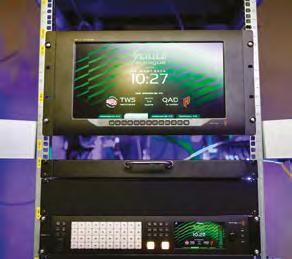
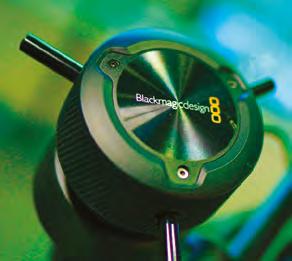

brands do, but in a user-friendly way. That is the biggest advantage for us, along with availability, affordability and short learning curves. We can learn a new piece of equipment in one or two days and be ready for production.”
The Saudi League, he notes, was designed to develop talent across every level of the ecosystem, from players to production teams. “The special thing about the Saudi League is that it’s built by the federation to create everything locally, from players to talents to the operator team, developing them to a global standard for esports.”
Saudi Arabia’s esports ecosystem is expanding rapidly, drawing international attention and investment. Vanguard’s model of combining robust infrastructure, adaptable technology and an in-house talent pipeline positions it as a leader in the region. Its approach contrasts sharply with traditional sports production, which often relies on long


lead times and specialised crews. Esports, by contrast, demands agility, rapid adaptation and a deep understanding of diverse game mechanics and formats.
“Every week presents a new challenge,” Nasser reflects. “We might switch from a 1v1 fighting game to a massive battle royale tournament. Each format has unique requirements for cameras, graphics and production
Every week presents a new challenge. We might switch from a 1v1 fighting game to a massive battle royale tournament
MOHAMMED NASSER, HEAD OF LIVE PRODUCTION, VANGUARD
workflows. Blackmagic gives us the flexibility to scale instantly and maintain consistency across all events.”
Vanguard’s multi-camera setups, immersive LED walls and integrated graphics ensure fans – whether in the arena or watching online – experience every critical moment. “We strive for production values that rival global esports tournaments. Our goal is immersion, reliability and an experience that keeps viewers returning week after week.”
Looking ahead, Vanguard plans to expand its technical capabilities, explore emerging esports titles and refine workflows to maximise efficiency.
“The Saudi League is just the beginning,” Nasser concludes. “We’re building a complete ecosystem from players and production teams to technology. The industry is evolving fast, and we’re proud to be leading that transformation.”
Vanguard has multi-camera setups, LED walls and integrated graphics intended to capture every critical moment.











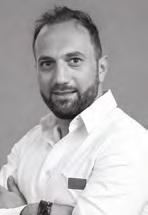







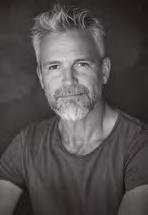
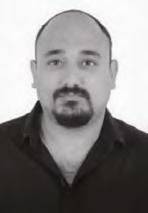


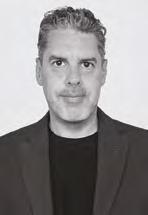

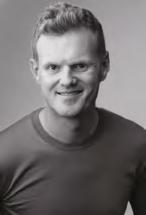


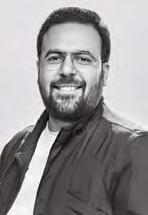



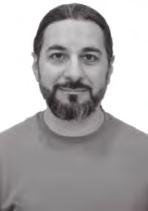




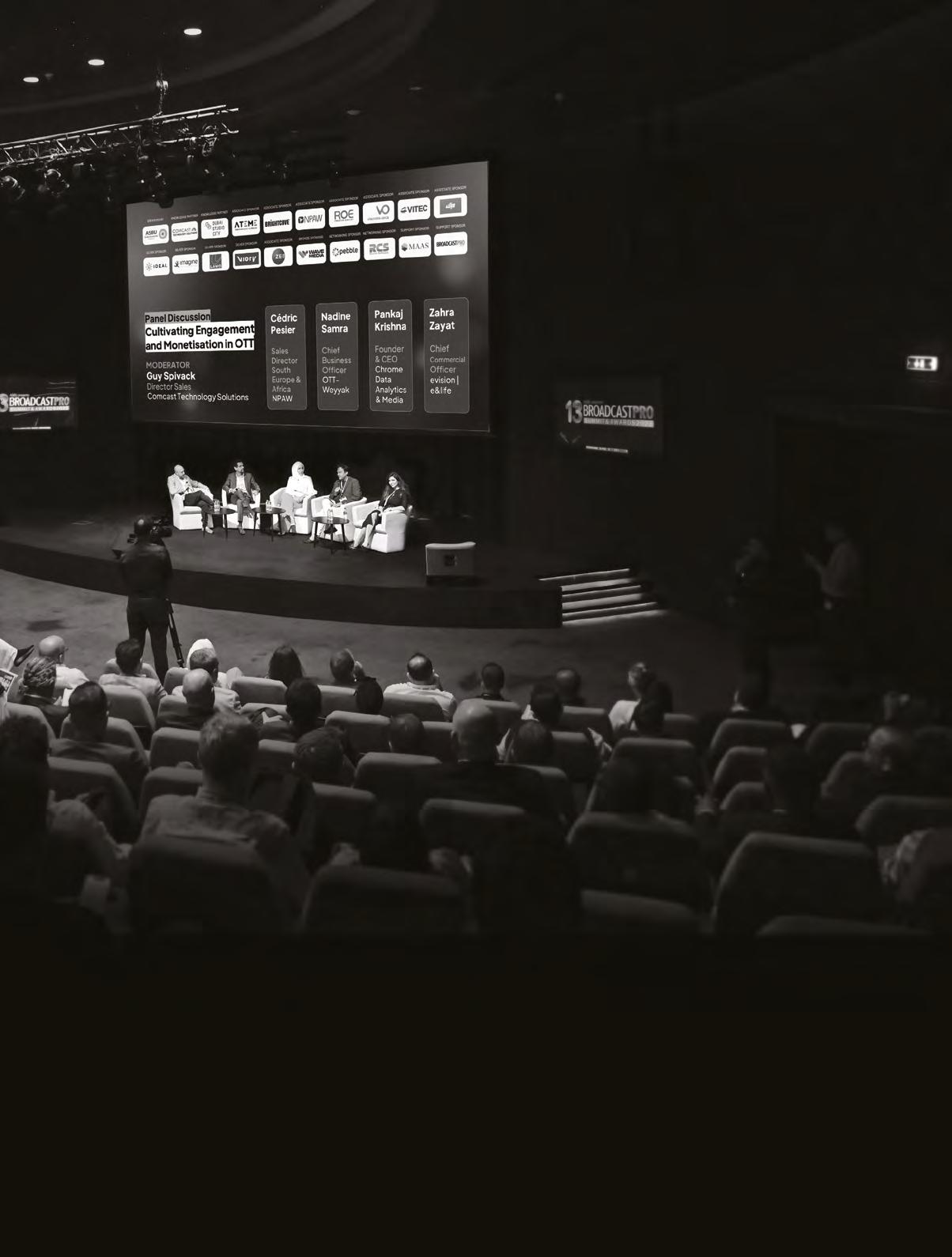








HOW AL MASHHAD IS ENGINEERING THE FUTURE OF AI BROADCASTING
In a region where technology and media are converging at speed, Al Mashhad has been quietly building one of the GCC’s most ambitious AI programmes – not as a futuristic experiment, but as an integral part of its everyday broadcast ecosystem. In an exclusive interview with Vijaya Cherian, Head of Technology Srinivas Kuppa reveals how the network is redefining what AI means inside a modern newsroom
From its Dubai headquarters, Al Mashhad has engineered what few regional broadcasters have dared to attempt: a fully integrated AI ecosystem that powers the newsroom from ingest to air. Every frame, subtitle and soundbite now passes through intelligent systems designed not to supplant editors and journalists, but to empower them. As Head of Technology Srinivas Kuppa puts it: “The goal has never been to replace human creativity but to amplify it – faster, smarter and always under editorial control.”
Launched in early 2024, the initiative has already changed the rhythm of Al Mashhad’s newsroom. What began as a set of isolated experiments in video generation and speech recognition has evolved into a hybrid AI infrastructure that handles everything from subtitling and translation to video enhancement and short-form packaging.
“At Al Mashhad, our engineering team adopts a forward-looking approach by viewing challenges as opportunities for innovation. Instead of following the conventional practice
of enumerating popular AI tools, we systematically mapped each challenge to targeted solutions,” says Kuppa.
From experiment to enterprise
The company’s AI journey formally began in January 2024 with three clear priorities: safeguarding content privacy through local generation, accelerating turnaround from ingest to on-air, and lowering production costs per unit while preserving human oversight. Within months, Kuppa’s team moved from local model testing to full-scale deployment.
The first practical milestone had come earlier, however, in 2023, when the creative unit delivered a complex production that combined multiple generative tools and workflows. That experience convinced the network to internalise AI development.
“In 2023, our creative team delivered the Middle East’s first AIdriven historical narrative. Building on that momentum, our technology team moved swiftly to develop a proprietary in-house AI tool designed to supercharge future productions
with greater speed, consistency and creative range,” says Kuppa. By Q1 2024, the team had formalised what it calls the Enterprise AI Landscape – a blueprint integrating core production functions with a custom orchestration platform. The roadmap is ambitious: a generative media production suite by late 2024, intelligent content automation integrated with newsroom systems in 2025, predictive operations intelligence embedded directly in broadcast dashboards by 2026.
The multimodal context protocol
At the core of this project is Al Mashhad’s proprietary Multimodal Context Protocol (MCP), an inhouse platform powered by a custom large language model fine-tuned for Arabic media. It was built to unify every layer of the AI pipeline into one streamlined system, says Kuppa. “The platform was meticulously customised to optimise various broadcast workflow use cases. It operates across multiple GPU servers to enable highly efficient parallel processing,

which is particularly beneficial for task-oriented AI workloads.”
The MCP houses a growing suite of modules: text-to-image, text-to-video, image-to-video, avatar-based video and automatic reels with subtitles; image cropping, highlight generation, upscaling and frame correction; live translation, subtitling and chatbot search; analytics for trending detection and social-video insights. Even the network-operations centre (NOC) now uses a smart contribution downloader that retrieves incoming
The goal has never been to replace human creativity but to amplify it – faster, smarter and always under editorial control
SRINIVAS KUPPA, HEAD OF TECHNOLOGY, AL MASHHAD
feeds, automatically enhances them and ingests them into the newsroom system.
Extensive testing of open models on platforms such as Hugging Face enabled the team to finetune its own environment for the demands of real-time television. “Al Mashhad’s AI ecosystem spans four domains – content creation, media processing, text-audio-language and video analytics,” says Kuppa.
Hybrid by design
Behind the scenes, Al Mashhad’s infrastructure is deliberately hybrid. Tasks demanding low latency or handling of sensitive content remain onpremises, while scalable or non-critical processes run through cloud APIs.
“Latency and performance for real-time rendering and playout adjacency remain on premises,” notes Kuppa. “Cost and scalability for batch transcription, translation and classification use local engines scheduled for efficiency. Confidentiality and compliance keep sensitive footage and scripts inside isolated networks with role-based access.”
The stack itself reflects a pragmatic mix of proprietary development and selective partnerships. The engineering team builds on open frameworks such as PyTorch and TensorFlow, layered with custom models optimised for Arabic dialects. Cloud subscriptions handle large-scale media processing, while integrations with ElevenLabs provide text-to-speech in hybrid modes.
“Our AI stack reflects a multilayered, best-of-breed approach designed for flexibility, scalability and editorial control,” explains Kuppa. “This hybrid ecosystem allows us to balance speed and innovation with security, compliance and oversight”.
Seamless integration
Integrating AI into live production and
Hybrid AI infrastructure handles everything from subtitling and translation to video enhancement and short-form packaging in Al Mashhad’s newsroom.

Image Creation Generates images from text descriptions

Audio Production Produces audio and speech from text scripts
AL MASHHAD’S AI INTEGRATION CAPABILITIES

Video Generation Creates video from text prompts and media
newsroom control was no small feat, requiring workflow re-engineering, staff retraining and new interfaces. Yet by anchoring every deployment in a tangible newsroom need, Al Mashhad minimised disruption. Today, the NOC downloader automates contribution intake, applies enhancement intelligently and pushes feeds into the newsroom system with consistent metadata. Subtitling is now powered by real-time speech-to-text aligned with editorial checkpoints. “Integration was acknowledged as a key challenge, but by anchoring AI deployment in real operational needs – not just tech novelty – we maximised adoption,” Kuppa explains.
Faster, smarter workflow
The impact on daily operations was immediate. AI now accelerates every stage of production. Story research begins with competitive web scrapers that feed prompt generators for ideation; subtitling and captioning are handled by automated engines with human verification; highlight reels and shortform packages are rendered in minutes. Quantitatively, the gains are striking. Subtitling turnaround has improved by 70%, metadata tagging by 85% and drafting of news summaries by about 40%. “These gains directly support Al Mashhad’s adoption rate for AI-assisted captioning, reels and archival indexing,” remarks Kuppa. “They free journalists

AI Reel
Production Produces
AI reels with AI-generated subtitles

Content Extraction Extracts video and ideas from social media

Image Cropping Smartly crops images based on interest areas
and producers to focus on storytelling, verification and creative development.”
Editors now approve every AIassisted output, but their roles have evolved from mechanical oversight to creative direction. Producers can generate multilingual versions of stories on demand, while engineers rely on automated QA and predictive monitoring to ensure playout reliability.
Training the human loop
No AI programme succeeds without people. At Al Mashhad, adaptation began with a structured upskilling plan. “AI Tools for Editorial Workflows is a two-

API Access Provides browserbased ChatGPT
API access

Media
Upscaling Enhances and upscales
AI videos and images
hour hands-on session for producers, editors and journalists,” says Kuppa. “Generative Media and Automation Essentials provides internal knowledge transfer for technical and NOC teams. Responsible AI in News Production raises awareness on ethics and human oversight for all editorial staff.”
Human agency remains a cornerstone of the initiative. “Al Mashhad’s AI principles explicitly prioritise human creativity and mandate human oversight. The mantra ‘machines and humans work together’ reinforces that AI is an assistive tool, not a replacement.”
AL MASHHAD’S ENTERPRISE AI ORCHESTRATION PLATFORM
This cultural positioning has helped neutralise early scepticism. Journalists recognise that automation eliminates drudgery rather than editorial influence, and engineers see that innovation serves operational stability.
For creative teams, AI has become a new sketchpad. Text-to-video and image-to-video tools allow rapid prototyping of visuals; virtual avatars simulate presenters for promos or explainers; and multilingual synthesis enables near-instant localisation.
“Tools like this have expanded creative possibilities,” says Kuppa. “Creative teams now prototype quickly while maintaining brand and tone. Rapid multilingual versions enable earlier feedback from editors and audience teams, improving story framing and reach.”
Guardrails and governance
Technology at this scale brings ethical responsibility. Al Mashhad enforces human review at every step and embeds provenance markers using Adobe Content Credentialsequivalent tags in exported media.
“Automation compresses cycle time while mandatory human review, visible attribution and provenance enforcement protect authenticity and journalistic standards,” says Kuppa.
The company’s internal framework defines fairness through access controls and audit trails. Each AI-assisted process includes mandatory checkpoints, while logs ensure transparency. To counter misinformation, the network employs deep-fake detection based on Perplexity analysis and editorial review for all AI-generated or externally sourced material. Copyright and contentownership issues are handled through strict licensing and storage policies, with clearance logs maintained for audit.
“Planned Milestone 3 includes automated ingest filters running

By anchoring AI deployment in real operational needs –not just tech novelty – we maximised adoption
SRINIVAS KUPPA, HEAD OF TECHNOLOGY, AL MASHHAD
source validation, reverse-image checks and metadata consistency scanning,” Kuppa adds.
Compliance and transparency
Ethical guidance for the initiative draws on frameworks from the Dubai Future Foundation Authority, aligning daily practice with transparency and accountability standards. The network has even designed an iconography system – HMC (Human-Machine Collaboration) – displayed across research and generative outputs. “The icon set combines human-machine collaboration symbols with standard research and publishing symbols, so viewers can see at a glance whether an
output was created entirely by humans, created with assistance or generated by machines,” explains Kuppa.
Looking ahead
As the programme matures, Al Mashhad is preparing to extend AI deeper into analytics, recommendation engines and virtual presentation.
Upcoming pilots include localised live virtual anchors and synthetic-voice generation for multilingual newscasts.
“Near-term priorities include evolving new models integration, AI-driven predictive and proactive operations intelligence, automated video and audio quality control before air, and pilots for localised live virtual presenters,” Kuppa notes. These ambitions are grounded in measurable editorial value, transparent governance and operational efficiency. In Kuppa’s view, Al Mashhad’s achievement is not merely technical but also philosophical. “This approach demonstrates that a local-first AI programme can deliver measurable editorial and operational value while respecting ethics and transparency. By focusing on security, speed and provenance with human approvals, it offers a practical model that peers in the region can adapt to their own newsroom and playout realities.”
A model for the region
In many ways, Al Mashhad’s initiative encapsulates the next phase of MENA broadcasting: a balance between automation and authenticity. By choosing to build locally, train internally and keep human judgment at the centre, the network has crafted a blueprint that feels both futuristic and familiar, where technology amplifies, not replaces, the craft of journalism. The result is a newsroom that moves at algorithmic speed without losing its editorial soul.
NAVIGATING A NEW ERA OF CONTENT DELIVERY
As viewers demand uninterrupted access to personalised content anywhere and anytime, broadcasters must embrace cloud-native solutions to keep pace, says Stuart Boorn
The media industry is undergoing a profound transformation. The rise of video-on-demand (VOD) and overthe-top (OTT) platforms has reshaped how audiences consume content. Viewers now expect seamless access to high-quality programming on any device, at any time, from any location. This shift has created a more fragmented and demanding content ecosystem. Broadcasters and content owners are expected to deliver everything to everyone, everywhere. A single feed may need to support multiple languages and accessibility features such as subtitles and audio descriptions, and to be tailored for diverse platforms. The result is a hybrid delivery model that challenges legacy workflows and demands a new level of operational efficiency.
Efficiency through agility: The cloud advantage
Today, broadcasters must be able to launch services quickly, support new platforms on demand, personalise content at scale and manage costs, all without compromising on quality.
Cloud-native, software-defined playout services offer a compelling
solution. By decoupling operations from physical infrastructure, broadcasters gain the flexibility to adapt, scale and innovate in real time. Cloud platforms enable dynamic capacity adjustments based on audience demand.
This agility is especially critical during high-pressure moments such as live sports, breaking news or major cultural events. Cloud infrastructure allows content owners to respond instantly, ensuring seamless delivery at any scale. It also empowers them to tailor content for specific markets or audience segments, and to experiment with new monetisation strategies in a low-risk, low-cost environment.
Flexible capabilities for smarter operations
Efficiency in cloud playout is not just about speed – it’s about smart resource allocation. Cloud platforms support a wide range of features, including live voiceovers, access service integration and event-driven functionality. These capabilities can be activated or deactivated as needed, allowing broadcasters to experiment without long-term contractual commitments. This modular approach enables

content owners to align technical capabilities with business needs. For example, a broadcaster might enable additional features for a high-profile event and scale back during offpeak hours. This flexibility reduces waste, optimises performance and ensures that resources are used where they deliver the most value.
Resiliency that matches demand
Another key efficiency driver is configurable resiliency. Cloud playout platforms offer options for single- or multi-availability zones and single- or dual-site operator setups. This means broadcasters can scale infrastructure to match audience demand, ramping up or scaling down during quieter periods. This elasticity not only improves

cost control but also enhances service continuity. By aligning infrastructure with real-time needs, broadcasters can maintain high-quality delivery while avoiding unnecessary overheads.
Operating models that fit
Cloud playout also supports a range of operating models, from platformas-a-service (PaaS) to hybrid and fully managed solutions. This adaptability allows broadcasters to choose the level of control and support that best suits their organisation.
Explicitly, this means some broadcasters will retain their operational teams, leveraging platform flexibility by adding and removing channels far more quickly than before. This provides an
inherent cost-efficiency that payper-use licence models enable. Some broadcasters are at the stage where they will choose to focus on the creative aspects and generating rights, outsourcing the specialist playout operation as a managed service.
Cloud operation means this decision isn’t a one-way door – operations are standardised and run from anywhere with a generic setup, so a broadcaster could choose to operate in the day and outsource out of hours.
Whether opting for a handson approach or leveraging expert management, content owners can scale their operating model alongside resiliency and capability. This mixand-match flexibility ensures that efficiency is built into every layer
of the workflow, from technical deployment to business strategy.
Built for speed, not legacy
One of the most significant efficiency gains comes from avoiding legacy infrastructure. Many providers still rely on dual systems, integrating cloud components into traditional workflows or maintaining on-premises playout alongside cloud services. This approach introduces complexity, cost and delay. By contrast, cloud-native platforms built from the ground up eliminate the drag of legacy systems. They offer faster deployment, lower operational costs and greater innovation potential.
A strategic shift toward efficiency
The industry has reached a watershed moment. Changing viewing habits, evolving market dynamics and rapid technological advancements have converged to make the evolution of cloud playout and its associated operations essential. To futureproof their operations, content owners must embrace modular, scalable, automated workflows that flex with changing behaviours and market demands. Those who do will be better positioned to optimise performance, control costs and thrive in a competitive media landscape.
STUART BOORN IS HEAD OF PRODUCT, MEDIA & BROADCAST AT ARQIVA
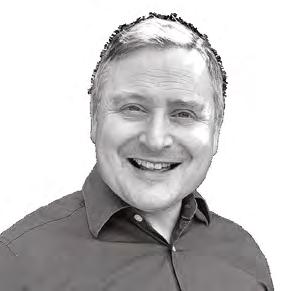

CINESCHOOL SANS BORDERS
The latest edition of Advanced Media’s CINESchool served as a convergence point for aspiring filmmakers, industry mentors and global cinematic perspectives. We bring you the highlights

If films transcend borders, so does filmmaking. Exemplifying this spirit was the second edition of Advanced Media’s CINESchool, led by awardwinning Chinese filmmaker Ran Li and Czech cinematographer Thomas Krivy. In attendance were 50-plus film students from prominent UAE universities such as SAE Institute, University of Wollongong, Amity University, Manipal Academy of Higher Education, Higher Colleges of Technology, Zayed University and NYU Abu Dhabi.
The biannual digital cinema series is held in collaboration with the Prague Film School, of which both Krivy and Li are alumni. The three-day workshop, featuring a praxis-heavy curriculum, ran from October 15-17 at Advanced Media’s premises in Dubai. Advanced Media launched its CINESchool series in 2023 with the goal of providing aspiring filmmakers with the opportunity to refine their craft under the guidance of internationally acclaimed experts. Participants are also given the opportunity to work with professional camera, light and sound setups.
“By bringing together global mentors like Ran Li and Thomas Krivy with passionate UAE-based students, CINESchool nurtures a new generation of filmmakers who think beyond boundaries,” says Pooyan Farnam, Marketing Manager, Advanced Media. “Every edition of CINESchool reinforces our commitment to empowering creative voices through hands-on learning and real-world industry insight.”
Li’s first appearance at CINESchool was doubly meaningful. As its first female instructor, she symbolises the increasing presence and mastery of women in filmmaking. She is also an example of how the craft has the ability to break through
all kinds of barriers – geographic, linguistic, cultural and creative. Her unconventional career path made her the ideal voice to lead the ‘Launching Your Feature Film Career’ session. The Chinese filmmaker has a degree in International Trade Law, and upon graduation was awarded a scholarship in Europe to pursue a master’s degree in law. During her time in Amsterdam, Li discovered that her real calling lay in film.
“I realised that I wanted to express myself using film as a medium. I didn’t
go to any film school at the time. I just started learning from YouTube.” Li made a two-episode documentary that she entered in student film festivals. “The documentary followed the day of my Dutch friend, who was a stand-up comedian. It was very well received at the festivals.”
Encouraged by this first success, she decided to pursue fiction filmmaking.
“I knew this sort of filmmaking would require education, so I applied to the Prague Film School in 2014.” A year later she graduated with Best Directing
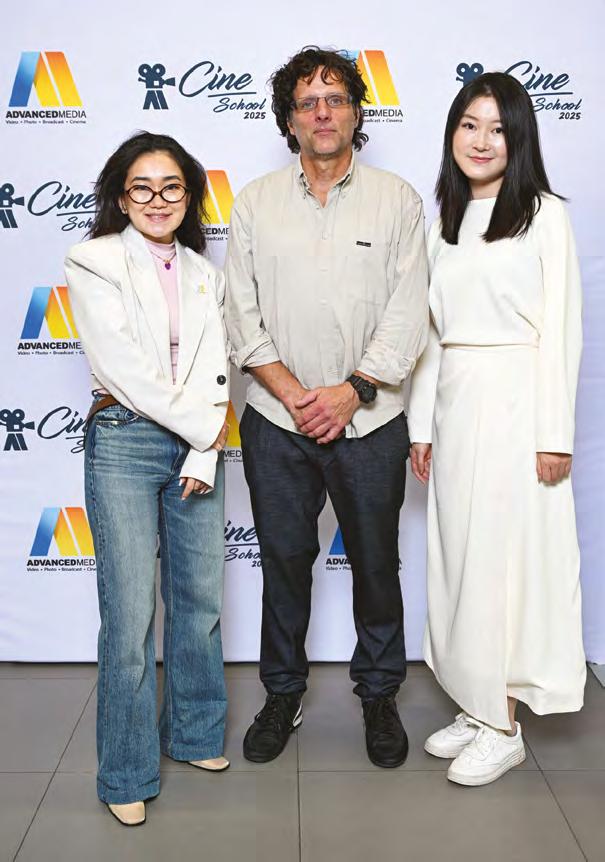
From left: Advanced Media’s Digital Cinema Assistant Brand Manager Raiza Yerzhan with cinematographer Thomas Krivy and filmmaker Ran Li at CINESchool.
and Best Scriptwriting awards for her diploma film Lucie, which she screened at the event. A coming-of-age drama, the film traces the experiences across 24 hours of a teenage girl who steals her boyfriend’s motorcycle.
“Lucie opened so many doors for me. It was screened in over 60 film festivals and paved the way for me into professional direction,” says Li. In 2016 she decided to move back to China, where she used her short film to attend festivals and network. “By then, I felt I was ready for my first feature film, so I started writing the script for Till Love Do Us Part.”
Authentic storytelling is Li’s forte. “I’m obsessed with capturing slices of everyday life. Films have arc plots and minute plots. I am a minute plotter. I like being able to expand tiny fractions of feelings or emotions into something larger. I didn’t consciously know this at the time, but later realised that it was the reality of the scenes that really impressed people.”
Her films are also an example

I’m obsessed with capturing slices of everyday life. Films have arc plots and minute plots. I am a minute plotter RAN LI, FILMMAKER
of how language is not a barrier in filmmaking. “Till Love Do Us Part is a Czech film, but I wrote it in English. The actors just translated it,” she says candidly. Li’s background also enables her to maintain an “international flavour” in her productions. “They are not for everybody, though. My films resonate with people who have had some sort of global exposure, but some people don’t understand

what motivates my characters. Either way, it encourages discussion.”
Despite her successes, Li feels that self-expression is a luxury. “To be able to make your own film, send your message from script to screen, is extremely luxurious.” While most filmmakers are driven by passion, monetary considerations do steer the path. “I had been working on my first feature film since 2016, but it came out only in 2020. I had to raise money for each stage: production, post-production and release.” To raise funds for her dream project, Ran Li took up diverse jobs. “I worked as an English teacher when I first returned to China. I also made a few short films in Mandarin and TV commercials.”
On the creative side, capturing audience attention remains a challenge, especially in the Chinese market where short-form videos dominate. “In China, the viewers love TikTok. It’s very hard to get their attention for longer forms. When I released my film, I wasn’t competing with other films. I was competing with media platforms like TikTok for people’s attention.”
Given the limited attention spans of today’s viewers, Li emphasises remaining in the public eye at all times. “I was anti-social media, but then I realised how important it is to be seen. Now I film my experiences for my social media accounts – just candid behind-the-scenes shots and small glimpses of my day.”
These experiences were the perfect backdrops for Li’s sessions on ‘The Short Film Journey: From Script to Screen’ and ‘Getting Seen: Festival Strategy and Distribution’. Her parting advice to budding filmmakers: “Don’t keep waiting for the right time, the perfect script, the right state of mind, the best team. These will never happen together. There’s only one right time, and that is now.”
CINEMATOGRAPHY WITH KRIVY

Veteran cinematographer Thomas Krivy, a long-time instructor at PFS, returned to Dubai for his second CINESchool edition. Known for his work across narrative features, documentaries, commercials and music videos, he brings decades of practical expertise to his teaching.
Over the years, he has seen several generations of filmmakers pass through the Prague Film School. Despite the onslaught of digital media and formats, a surprising number of students still gravitate towards the classics, he observes. “For them, there is a sense of novelty in the 35mm format where the results are not available instantly. They are very keen to get hands-on experience on that kind of equipment.”
At this year’s CINESchool, Krivy dealt with topics such as exposure and colour, finding the right lens, and lighting
and grid. “The students here are very enthusiastic about filmmaking. They are purely driven by passion, which is the most important thing for me.” His sessions include both theoretical and practical learning. “After the theory session, I demonstrate the concepts to them on the camera with sliders and ND filters. They also do a bit of spot metering and use macro lenses for split-field diopters.”
He feels the greatest challenge for today’s filmmakers is technique.
“Students have too much exposure, and they get carried away in finding the best technique. They lose focus on what is in front of the camera. The real world doesn’t work like this. You have to be fast and efficient, or you lose out on the momentum that has been built in the shot. Getting the right shot is more about timing than technique.”
A NEW STREAM RISING
With the roll out of beIN Stream across the UAE and Morocco, beIN Media Group is reimagining television delivery for the connected era. beIN Stream Technology Lead Saleem Shah and Synamedia EVP of Media Services Nick Thexton discuss how a cloud-first architecture, powered by Synamedia’s Senza platform, is setting new benchmarks for innovation, flexibility and reach across MENA

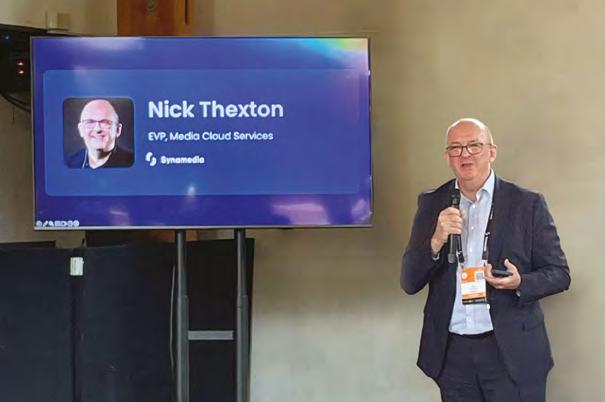
When beIN Media Group switched on its new subscription-based TV service, beIN Stream, on 16 September this year in the UAE, it was more than the launch of another OTT platform. For one of the region’s largest media organisations, long synonymous with satellite broadcasting, this new offering represents a reimagining of how content is delivered, operated and experienced across MENA.
The initial rollout in the UAE and Morocco is part of beIN’s broader strategy to expand its digital footprint across the region. Delivered through a compact Wi-Fi-enabled dongle that plugs into any TV, beIN Stream instantly transforms the simplest screens into a connected entertainment hub. Subscribers gain access to beIN’s extensive portfolio of live sports including the UEFA Champions League, Formula 1 and the Grand Slam tennis tournaments, alongside films and entertainment content, all without long-term contracts. Beyond convenience, the service targets previously underserved markets: multi-dwelling units where satellite dishes aren’t permitted and costconscious households seeking flexible, commitment-free options. Viewers can buy the device online or through beIN’s network of shops and dealers, plug it
into their TV’s HDMI port and set it up using a smartphone or tablet. The system updates automatically over the cloud, ensuring users always have the latest features and security enhancements. But behind this elegant consumer experience lies a significant technological evolution.
Powering the future with Senza BeIN Stream is built on Synamedia’s Senza, a cloud-first video platform described by the company as the “most disruptive product” in its portfolio. By shifting all processing and intelligence
from the device to the cloud, Senza removes the complexity associated with devices such as set-top boxes and streaming sticks. For broadcasters, this architecture enables faster deployment, greater flexibility, and the ability to expand into new markets and reach households without the limitations of traditional distribution models.
For beIN, which operates across 24 MENA markets, Senza represents an opportunity to move beyond traditional distribution constraints. “For quite some time we’d been exploring how to extend our reach beyond satellite into IP-based delivery,” says Saleem ‘Sal’ Shah, Technology Lead for beIN Stream. Shah heads up Product Development, Delivery and Support across MENA as part of the technology team at beIN Media Group, mainly focused on service enablement, backend platforms and overall technology operations.
“We wanted a product that would allow us to grow our footprint in new ways and appeal to new audiences, especially in markets where satellite dishes aren’t permitted or where cost sensitivity plays a bigger role. After evaluating various technologies, the opportunity we found through Senza was exactly what we needed.”

Nick Thexton, EVP, Media Cloud Services, Synamedia, at the IBC2025 press conference.
Saleem Shah (r) and Nick Thexton in conversation at IBC.

BeIN initially launched in the UAE and Morocco, where traditional satellite delivery can be challenging for multi-dwelling units and gated communities, and for price-sensitive households. “Now beIN Stream makes it possible for us to reach these audiences with a flexible, accessible solution for viewers,” Shah adds.
A new delivery model
The transition to a cloud-hosted platform has redefined how beIN develops and manages its streaming services. “We’ve always been primarily a satellite broadcaster and an OTT provider, but pure-IP live service delivery is a completely new dimension for us. What attracted us was the value proposition we can build around the service. As a pay-as-you-go model, there’s no long-term commitment. It allows us to deliver the same high-quality experience as satellite while building a flexible, scalable model to serve new customers without the friction points of installation or contracts,” Shah explains.
The model also leaves room for experimentation with multi-tier packages, regionalised pricing structures and exclusive content designed for each market. Importantly, beIN Stream integrates seamlessly with the

beIN Connect app, allowing viewers to watch across multiple devices.
How cloud-first changed the game
According to Shah, Senza’s cloud architecture didn’t just power the product; it changed how beIN’s engineers think. “The fact that it uses a web-development model is really important to understand. Normally, in our industry there’s a lot of complexity in managing software stacks for every TV or device. But one of the key things we realised early on is how much Senza changes the way you think about building a product. Because all the heavy lifting, number crunching and intelligence happens in the cloud, we can do amazing things such as animated
We wanted a product that would allow us to grow our footprint in new ways and appeal to new audiences
SALEEM SHAH, TECHNOLOGY LEAD, BEIN STREAM
graphics, rapid feature updates and new functionality without having to push updates to every single device across millions of subscribers. It’s far less disruptive for the customer and much faster for us to innovate.”
That shift from device-based software management to cloud orchestration has had another impact – speed. “You can do PowerPoints until the cows come home,” says Shah, “but nothing compares to sitting someone down and showing them the experience in real time. When we first looked at Senza, it felt radical. But because it was so easy to set up with our own content, we were able to sit in front of the executive team and allow them to experience our product on this device. That was a game changer.”
What’s next for beIN Stream
BeIN Stream’s roadmap reflects both technological ambition and regional nuance. The service is being prepared for a wider rollout across MENA in the coming months, timed with major sporting events including AFCON 2025 and the 2026 World Cup.
“On the technology side, there are some interesting developments we’d like to bring in. For example, we’re particularly interested in custom experiences tailored for different sporting seasons or cultural moments such as Ramadan, Eid or national days. As the UI is developed in HTML in the cloud and is completely customisable, we can rebrand or adapt the experience very quickly. It gives us the agility to stay relevant and keep improving the service. And beyond that, the possibilities look really promising,” says Shah.
With the region’s broadcasters increasingly embracing digital-first strategies, beIN Stream signposts where the market is heading: towards flexibility, cloud scalability and an experience shaped by software, not hardware.
Nick Thexton.
Saleem Shah.
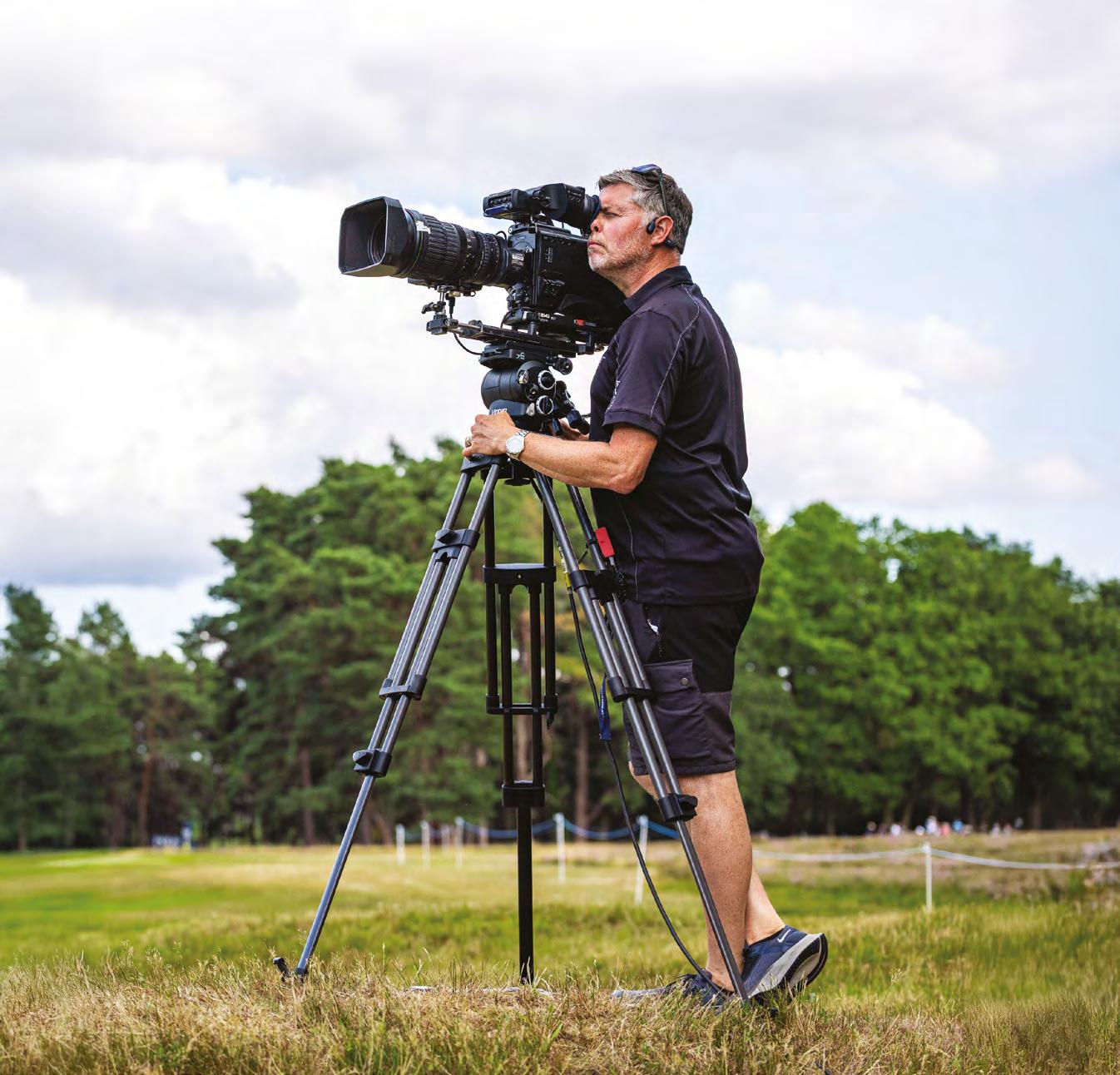

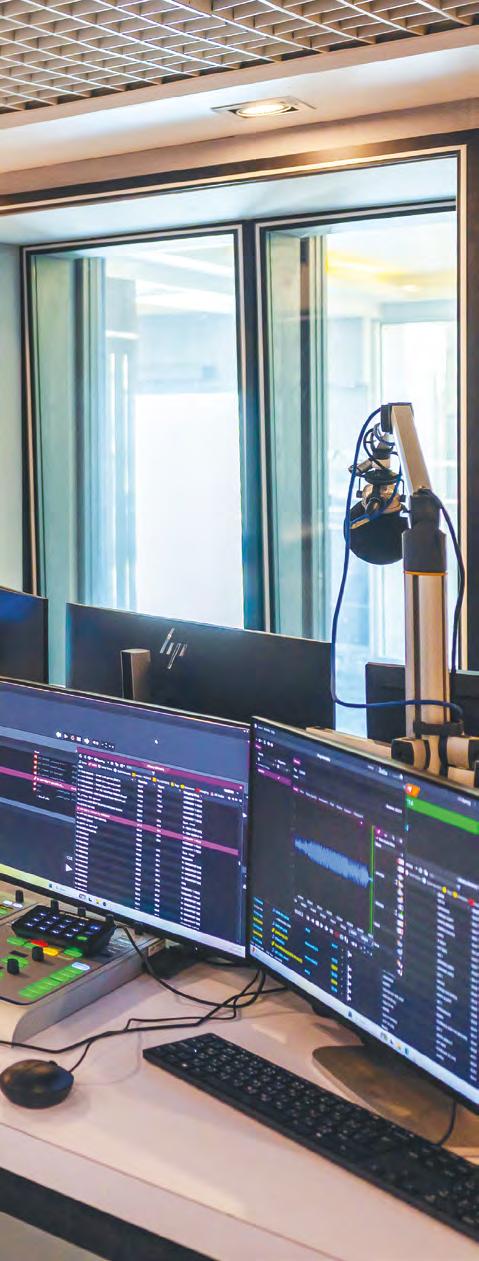
ABU DHABI MEDIA TRANSFORMS RADIO OPERATIONS WITH A UNIFIED BROADCAST ECOSYSTEM
Abu Dhabi Media Company recently completed the first phase of an ambitious tech overhaul being carried out in collaboration with RCS. Chief Technology and Operations Officer Ahmed Mohsen Al Menhali tells BroadcastPro ME what this transition signifies for the company
In an era when legacy broadcast systems are rapidly giving way to intelligent, unified platforms, Abu Dhabi Media Company (ADMC) has taken a decisive step forward by overhauling its entire radio infrastructure. Working directly with RCS, a global leader in radio automation and music scheduling, ADMC has completed the first phase of a transformation that brings eight FM stations onto a single, centralised ecosystem powered by RCS Zetta and GSelector.
Ahmed Mohsen Al Menhali, Chief Technology and Operations Officer at ADMC, says the initiative reflects the company’s long-term commitment to innovation and operational excellence: “This transformation is
part of ADMC’s strategic roadmap to redefine the future of broadcasting in the region. By consolidating all our stations into one intelligent, data-driven ecosystem, we’re creating a more dynamic and collaborative environment that connects our linear and digital platforms. This evolution enhances content agility, strengthens resilience and empowers our teams to deliver richer, more engaging experiences for audiences across every channel.”
From legacy systems to a unified vision
Before the migration, ADMC’s radio operations were powered by multiple systems that had served the network reliably for years. As the organisation’s
ambitions expanded towards greater integration and agility, the move to a unified platform became a natural next step in its innovation journey.
“Abu Dhabi Media has always operated with excellence across its radio brands,” explains Al Menhali. “This upgrade was not about replacing the past, it was about building on strong foundations to future-proof our operations. We wanted to create a single, intelligent ecosystem that enhances collaboration, efficiency and scalability across all stations.”
This approach led ADMC to award the migration contract to RCS in February 2025 following a comprehensive evaluation process, marking a new chapter in the network’s digital transformation.
End-to-end integration
The collaboration was designed as a full turnkey transformation encompassing software design, network architecture, hardware procurement, IT infrastructure, data migration and training.
This evolution enhances content agility, strengthens resilience and empowers our teams to deliver richer, more engaging experiences
AHMED
MOHSEN AL MENHALI, CHIEF TECHNOLOGY AND OPERATIONS OFFICER, ABU DHABI MEDIA COMPANY
“Our goal was to establish a resilient, future-ready environment with full redundancy and zero compromise on performance,” says Al Menhali. “This integration not only standardises workflows but creates the operational flexibility needed to scale seamlessly into new digital opportunities.”

“ADMC wanted a solution provider that could take complete ownership – from software design to network architecture,” says Baher Al Zaher, Managing Director at RCS MENA. “Our team managed everything end-to-end: hardware procurement, IT infrastructure, data migration, training and testing. The goal was to give the broadcaster a turnkey solution with full redundancy and zero compromise on performance.”
Engineering the transition
Migrating eight FM stations from two different ecosystems into one centralised environment required meticulous engineering and months of coordinated effort. Multiple staging environments were created to simulate real broadcast conditions, ensuring every audio asset, metadata tag and marker were transferred seamlessly. The new backend integrates hybrid redundancy with OS and database clustering, while Zetta’s Site Replication provides live database syncing for instant continuity.
The project’s first phase covered the full rebuild of backend audio and IT networks with complete redundancy.
“All servers, databases and services have hybrid failover architecture using OS and database clustering. Each on-air playout has multi-layered redundancy – main, hot-spare and backup – with local databases and audio caches that can run independently if needed,” explains Al Zaher.
“Every element of the design was guided by our priority to ensure uninterrupted service and full business continuity,” notes Al Menhali. “This upgrade strengthens our ability to operate efficiently and securely across every scenario.”
Tailored workflows, centralised standards
Despite each channel – Arabic, English, Hindi and Quran stations – having
Ahmed Al Menhali, CTO and Operations Officer, Abu Dhabi Media Company.
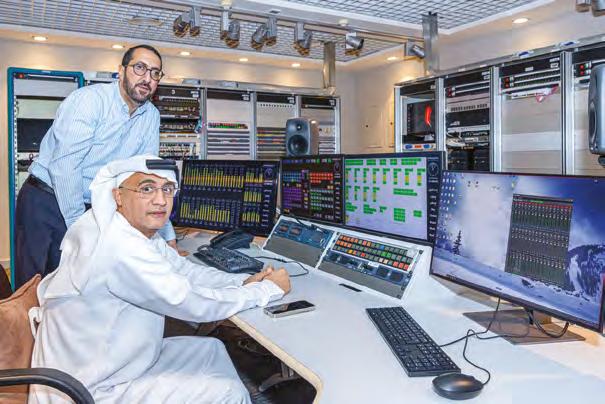
unique programming logic, all now operate under one unified umbrella. Common workflows ensure consistency across all eight stations. “Centralised asset management makes it easy to share content, apply uniform technical standards and maintain tight control over quality,” notes Al Zaher.
For the Quran station, for example, customised scheduling templates were built to align with the yearly Adhan calendar and time-specific programming, a level of precision made possible through centralised automation and rule-based scheduling.

Redundancy and flexibility by design
The new ecosystem combines physical and virtual servers with mirrored playouts, multi-path network storage and automatic site failover capability, delivering full redundancy and scalability.
“Resilience is built into every layer of the system,” explains Al Menhali. “We’ve eliminated single points of failure and created an environment where continuity and reliability are guaranteed. This is crucial for a national broadcaster serving audiences 24/7.”
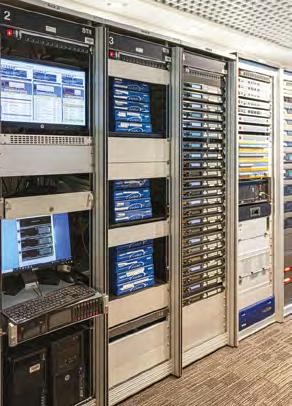
Browser-based control through Zetta2GO and Selector2GO also enables secure remote management of live playout, scheduling and voice tracking from any location, enhancing flexibility for on-air teams and ensuring seamless operations under any conditions.
Smarter scheduling, faster operations
The new platform has redefined collaboration across ADMC’s radio network. The streamlined approach has resulted in faster content delivery, reduced duplication and

Standing: Mohammad Saifi, Head of Broadcast Engineering; and seated, Abdullah Al Hashemi, Director of Broadcast Technology at Live Productions, ADMC.
Baher Al Zaher, Managing Director, RCS MENA.
greater opportunities for dynamic programming and localised advertising.
“We can now activate songs, clocks and programmes across multiple stations simultaneously – tasks that once took hours now take minutes,” says Al Menhali. “Our teams can manage metadata, logs and content across all sites in real time, allowing us to focus more on creativity and content rather than technical limitations.”
Tangible gains and strategic impact
The benefits of the new system have been immediate. Workflow efficiency has improved dramatically, while the ability to manage national shows with localised ad breaks has opened new commercial opportunities.
“This transformation enhances our creative flexibility and empowers our people,” Al Menhali explains. “It allows our teams to innovate faster and align every piece of content with audience expectations, a vital capability as we move toward more interactive, multi-platform experiences.”
Building
for the future
With Phase 1 completed, ADM’s

new broadcast backbone now lays the groundwork for expansion into digital audio, podcasting and streaming. “This transformation isn’t just about today, it’s about where media is heading,” concludes Al Menhali. “Our new infrastructure integrates seamlessly with our digital and OTT environments and is ready for AI-driven content management. It ensures that Abu Dhabi Media remains at the forefront of broadcast innovation –nationally, regionally and globally.”
A
regional benchmark
The ADMC-RCS collaboration exemplifies how innovation, resilience and integration can reshape broadcasting. It is a model for how national media institutions can modernise legacy systems while preserving cultural identity and operational excellence. By merging technology and vision, ADMC continues to strengthen its role as a leader shaping the future of the Arab media landscape – connected, intelligent and ready for tomorrow.
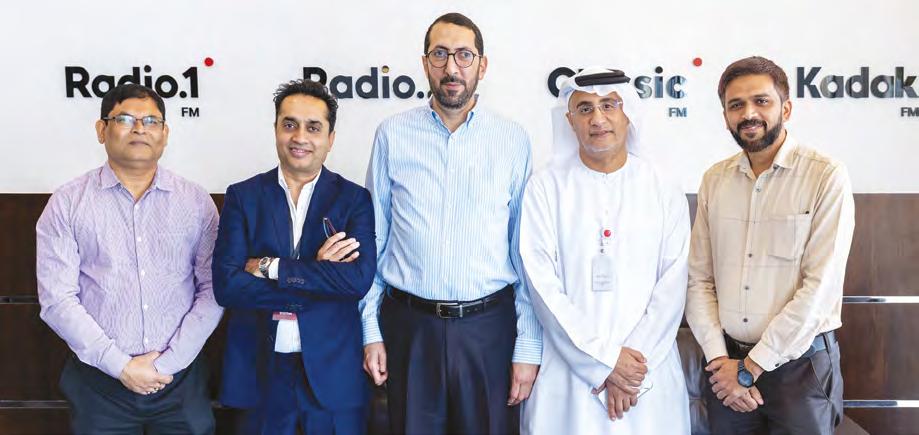
ADMC’s team can now manage metadata, logs and content across all sites in real time,
The ADMC and RCS teams.















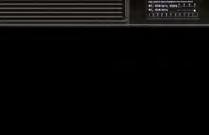




















ARDH ALSAMA’S VIRTUAL LEAP
Ardh Alsama’s new studio in Iraq, built with Mawja Tech and MRMC Broadcast, brings together precision robotics and immersive AR/VR workflows to elevate local broadcast production standards. BroadcastPro ME brings you the details
In Iraq’s rapidly evolving broadcast landscape, few ventures capture the ambition of Ardh Alsama, known in English as SkyEarth, quite like its new state-of-the-art television studio. Conceived to merge traditional broadcast with cutting-edge virtual production, the facility showcases the company’s goal of pushing creative and technical boundaries through the seamless integration of augmented reality (AR) and virtual reality (VR) workflows.
To bring this vision to life, Ardh Alsama joined forces with systems integrator Mawja Tech and MRMC Broadcast, a global player in robotic camera systems. The project’s central objective was to design a studio environment that could deliver the precise and repeatable camera movements essential for AR and VR productions. The challenge was not only to achieve flawless camera tracking, but to do so across a multi-set studio that demanded flexibility, real-time data precision and the ability to effortlessly merge digital and physical worlds.
Engineering the solution
At the heart of the studio’s design is MRMC Broadcast’s Track Robotic Head (TRH), installed on a curved broadcast rail built into the floor and extending more than 23m. The studio itself was purposebuilt to accommodate advanced broadcast technologies, ensuring the infrastructure could support such a complex installation.
Paired with the TRH system is MRMC’s PTA-2 broadcast camera platform, equipped with a Panasonic AK-HC3900 camera, Fujinon UA14x4.5BERD lens, teleprompter and talent monitor. Together they form a dynamic camera unit that operates in concert with the Brainstorm Infinity Set, a powerful virtual graphics engine enabling the creation of rich, immersive environments that blend seamlessly with live footage.
Creating VR shots on a curved track presents a unique technical challenge. Synchronising camera motion with the rendering of a virtual scene requires meticulous

MRMC Broadcast’s Track Robotic Head is installed on a curved broadcast rail built into the floor.
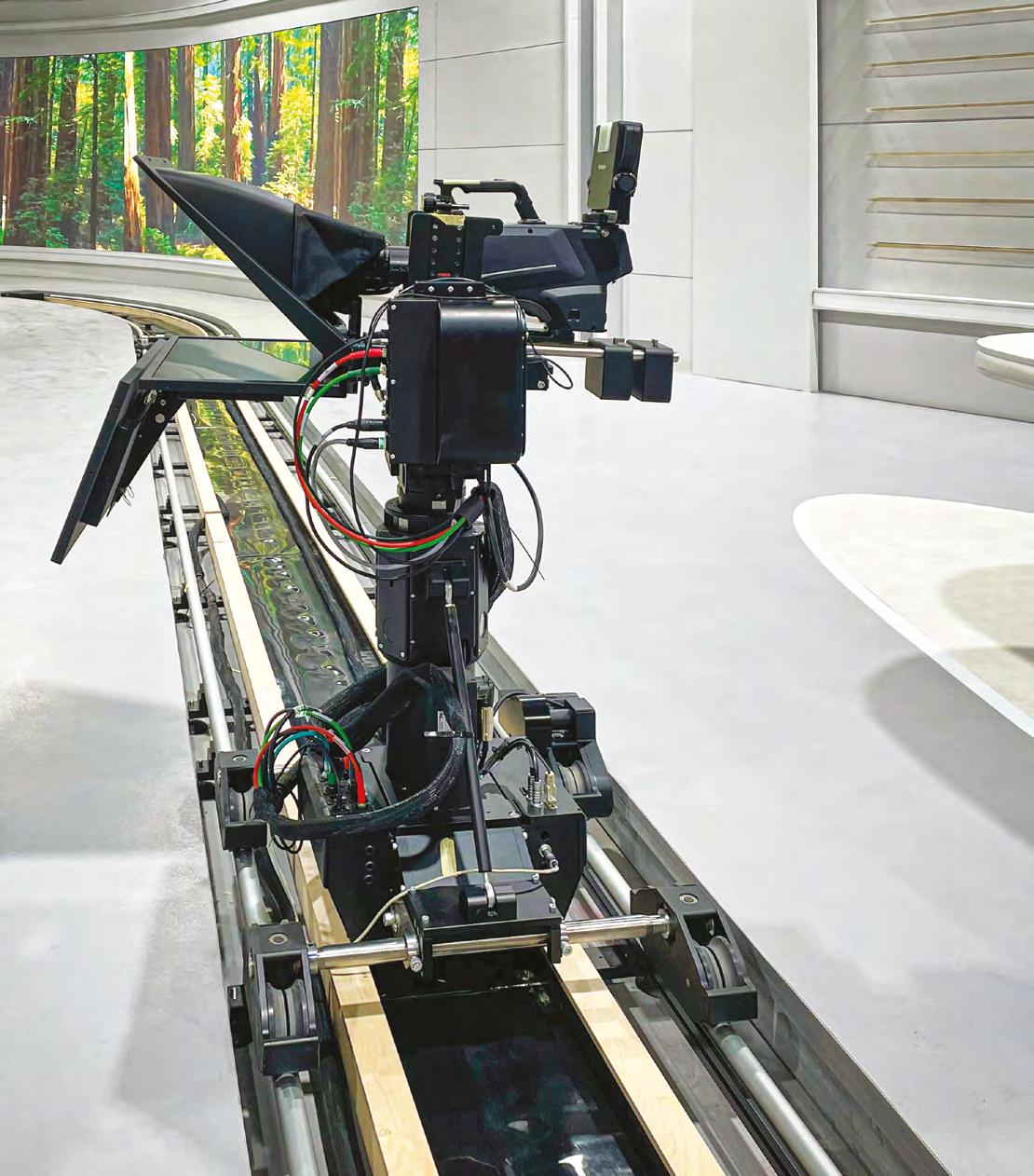
precision. To overcome this, the TRH is configured to output accurate Free Dimensional (FreeD) data even while navigating the curve, ensuring perfect alignment between the camera’s physical movement and its virtual counterpart. The result is smooth, repeatable motion that anchors every virtual shot in realism.
One of the standout components
The MRMC system has significantly enhanced the studio’s production capabilities
ZAID KHAFAJI, CEO, MAWJA TECH
in this setup is MRMC’s RoboKam software, which gives operators the ability to effortlessly switch between multiple camera presets, boosting workflow efficiency. RoboKam integrates tightly with the TRH system, enabling highly advanced, automated camera movements that can be previsualised, stored and recalled. The system’s support for real-time tracking protocols

The Ardh Alsama and Mawja Tech teams.

like FreeD makes it ideal for virtual studio applications. It also allows the recording and playback of complex movements – patterns impossible to replicate manually or with joystick control alone.
Strategic collaboration
The project was Ardh Alsama’s first foray into robotic rail camera systems within a broadcast environment. It chose MRMC Broadcast for the brand’s global reputation for engineering, precision and reliability. Serving as systems integrator, Mawja Tech played a pivotal role in the project’s execution, offering both technical implementation and strategic oversight from start to finish.
“The MRMC system has significantly enhanced the studio’s production capabilities,” says Zaid Khafaji, CEO, Mawja Tech. “The Track Robotic Head system seamlessly provides precise, repeatable camera movements, which was critical in choosing the right solution for synchronising with the advanced AR/VR elements. The complex setup and shape of the track meant we required a system with the ability to track and move cameras at specific times. This solution has streamlined the workflow, reduced manual intervention and increased production efficiency.”
The future of broadcast in Iraq
Ardh Alsama’s investment in robotic and virtual production technology is a major leap forward for Iraq’s broadcast industry. By pairing MRMC’s precision robotics with Mawja Tech’s integration expertise, the company has established a future-ready facility capable of delivering cinematic-quality AR and VR experiences to its audience.

TECH SPECS AT A GLANCE
Systems integrator: Mawja Tech
Robotic technology partner: MRMC Broadcast
Studio setup:
Purpose-built broadcast facility spanning multiple sets
Curved broadcast rail installation over 23m long
Camera system:
MRMC Track Robotic Head
MRMC PTA-2 broadcast camera platform
Panasonic AK-HC3900 camera
Fujinon UA14x4.5BERD lens
Integrated teleprompter and talent monitor
Software & integration:
MRMC RoboKam for preset automation and multi-axis control
Real-time FreeD tracking protocol
Brainstorm Infinity Set for virtual graphics and AR/VR environments

ALEXANDER HETTEL
Athlete-generated content adds a human touch to the stars and extends the narrative beyond the playing field
Athletes turning into content creators: What’s in it for sports broadcasts
Broadcasters and production teams today are navigating through the rise of athlete-generated content (AGC) – the people usually in front of the camera are now taking control.
Athletes and teams at major events are producing short-form clips, behind-the-scenes footage, TikToks and Instagram reels in real time. Increasingly, this material is getting embedded into live broadcasts and official social media channels.
While these authentic insights are gold for audience engagement, they also require a balancing act of legal and commercial issues.
Why broadcasters want in AGC adds a human touch to the stars and extends the narrative beyond the playing field. Appearing as highly shareable social media assets, it increases viewer engagement and drives second-screen interaction.
Integrating the pre-match team hotel tension into the highlights package creates the editorial freshness and authenticity that is highly valued by broadcasters. Additionally, leagues and clubs may turn to AGC to enhance their owned-and-operated social channels.
Real-world traction
High-profile competitions like the football World Cup and professional
leagues such as the Bundesliga have seen AGC become part of the ecosystem. Launched at the 2022 World Cup, behind-the-scenes footage became wildly viral with Hervé Renard’s motivational half-time speech that pushed Saudi Arabia to beat Argentina in the group stage. Starting with the 2025/26 season, the Bundesliga has introduced player POV smartphone footage, content from the team bus and dressing room access. Production teams may include those moments as part of the world feed, and the league may repurpose them in entertainment-focused clips that complement traditional match coverage.
Legal balancing act
That editorial value, however, brings a stack of legal tasks. Producers must secure proprietary rights in the content, acquire image rights from featured athletes and ensure that third-party IP is cleared. When athletes are asked or permitted to record on-site, there should be clear written consent covering the specific intended uses, including live broadcast, VOD, international distribution and social media repurposing.
Risks to exclusivity and enforcement
AGC can also undermine exclusivity.
A broadcaster who has invested in live broadcast exclusivity may find clips filmed on a player’s phone circulating widely before the exclusivity window ends. That can diminish the value of exclusivity and lead to disputes over whether a social clip is a permissible personal expression or a media rights infringement. Furthermore, AGC can be difficult to police for unauthorised transmissions and piracy unless correctly watermarked and tagged as part of the feed.
Mitigation and best practice
Broadcasters should negotiate bespoke provisions with rights holders that define permitted uses of AGC, and how AGC fits into their rights package and exclusivity period. Event hosts and leagues must implement legal clearances ahead of content capture, introduce editorial checks and build takedown mechanisms. Media regulations and event accreditation terms must be adapted to capture these productions and protect the value chain.
ALEXANDER HETTEL IS THE FOUNDER OF SPORTWERK LEGAL, A CONSULTANCY GUIDING CLIENTS THROUGH SPORTS, MEDIA AND ENTERTAINMENT VENTURES. HE PREVIOUSLY SPENT EIGHT YEARS AT FIFA, FOCUSING ON MEDIA RIGHTS, MUSIC AND WORLD CUP PROJECTS.







